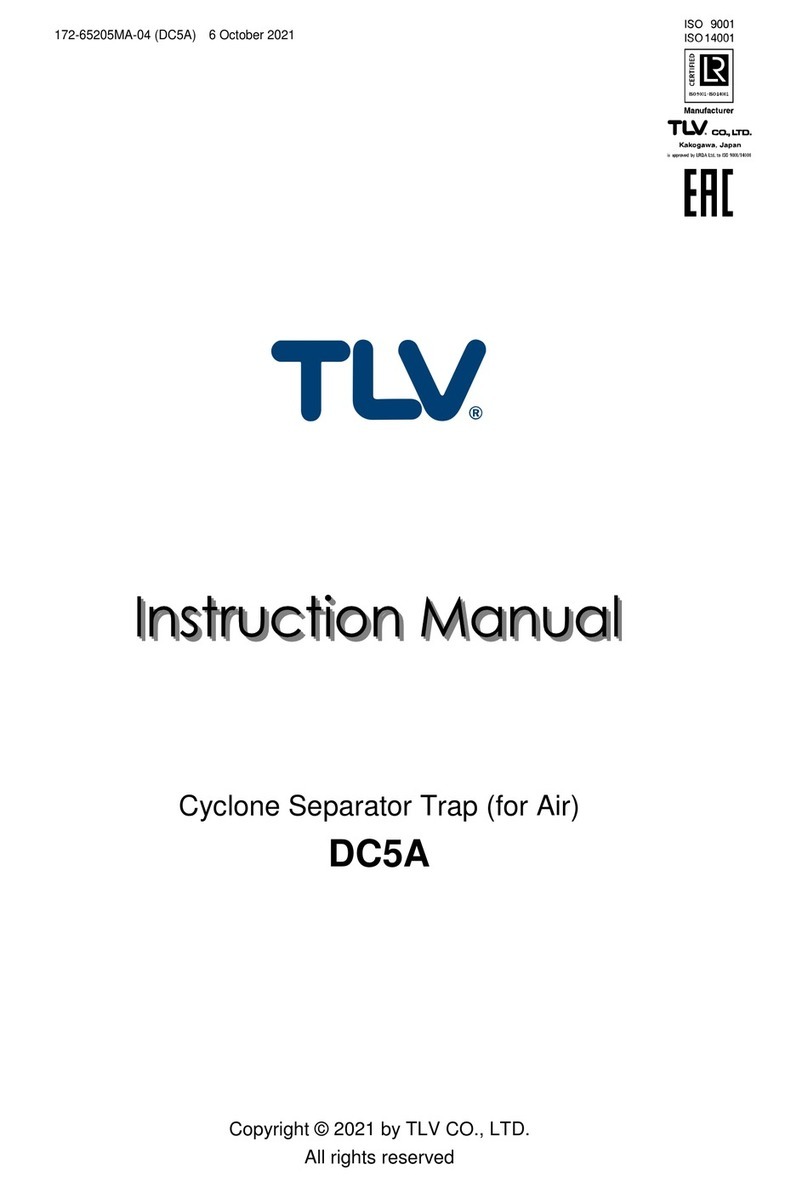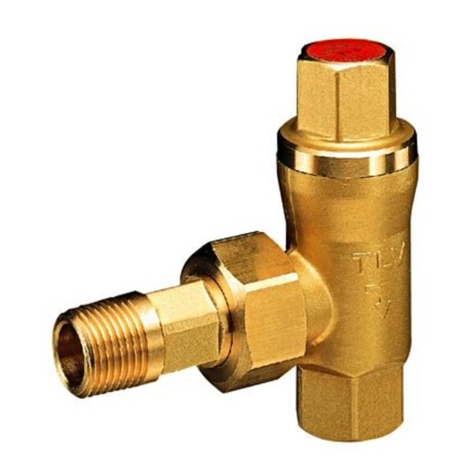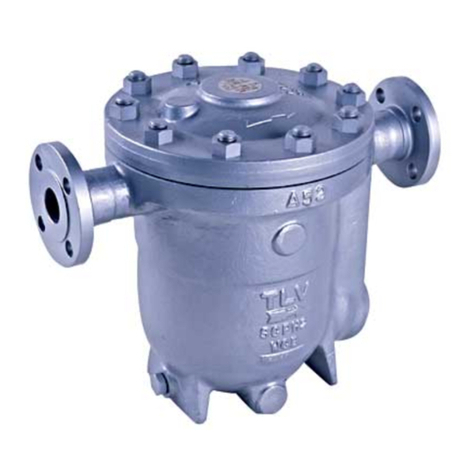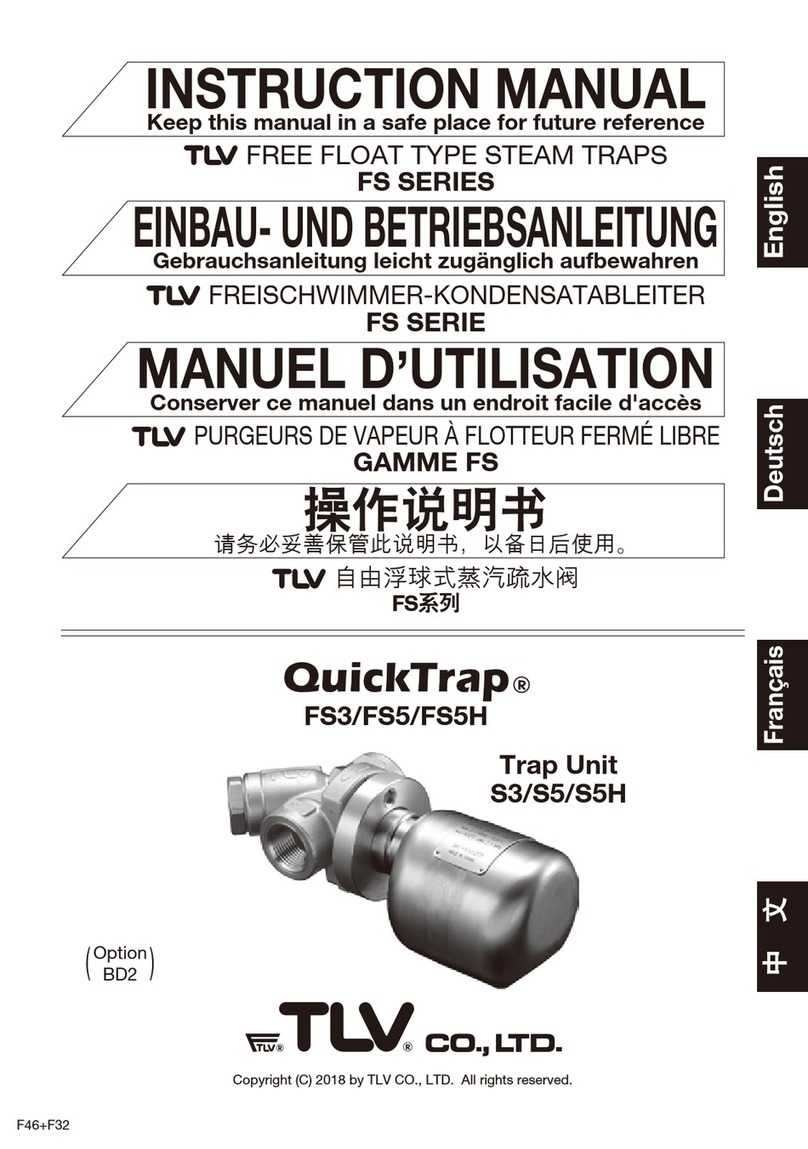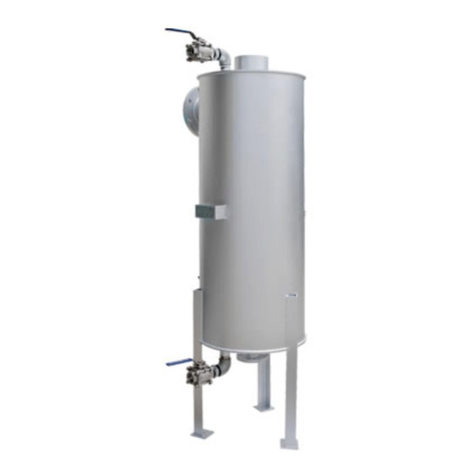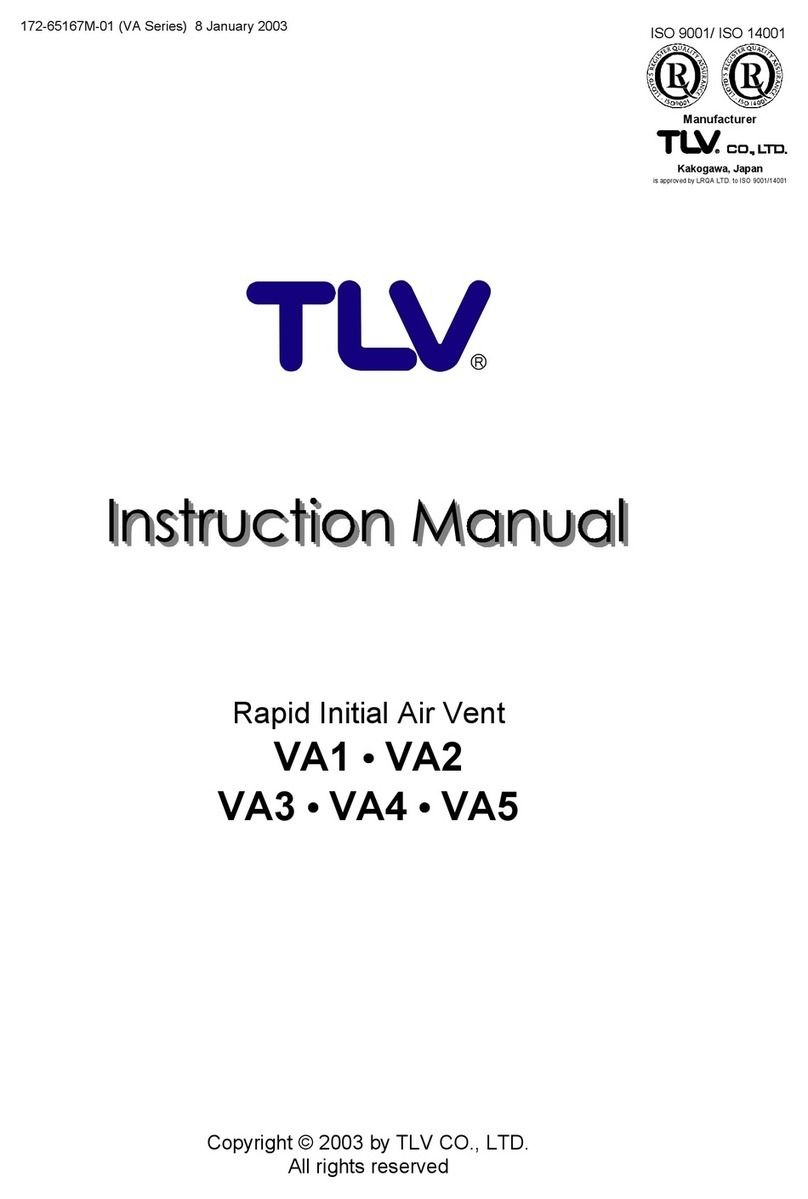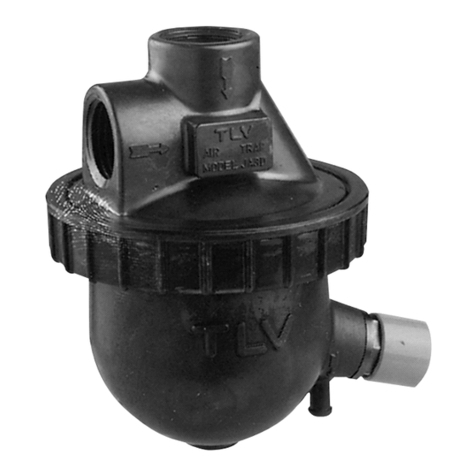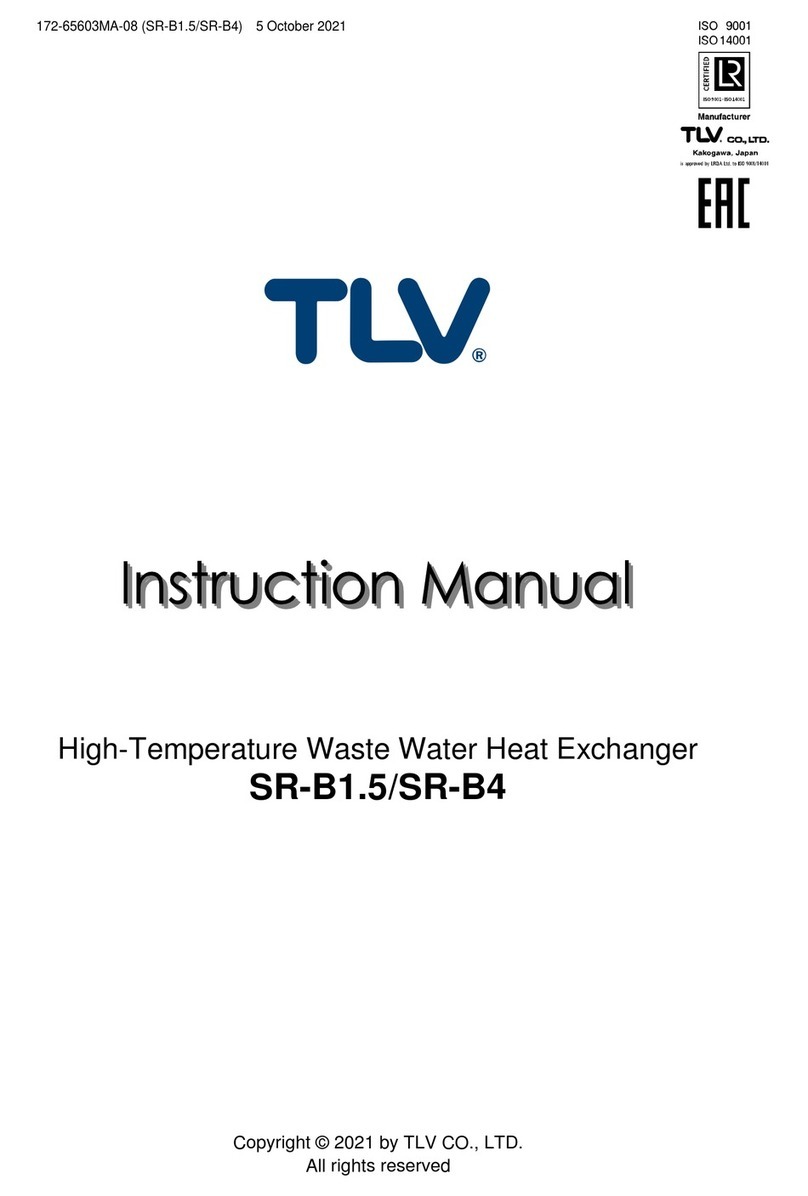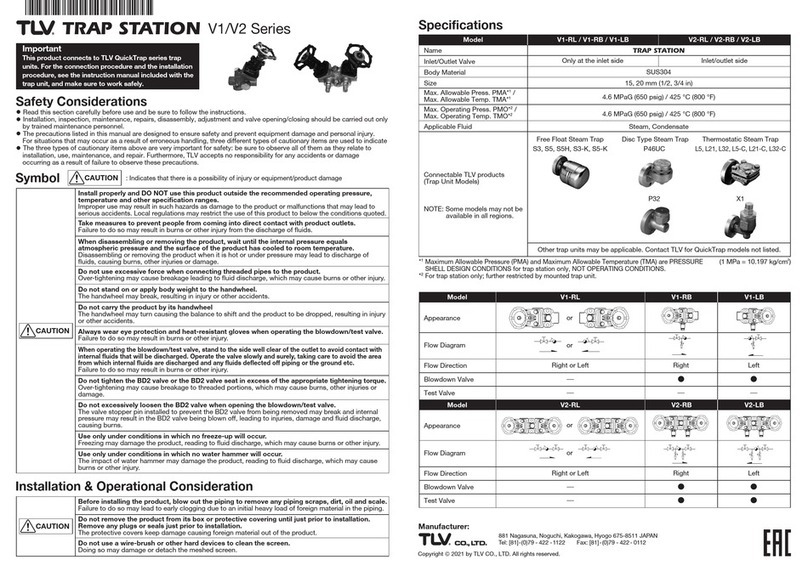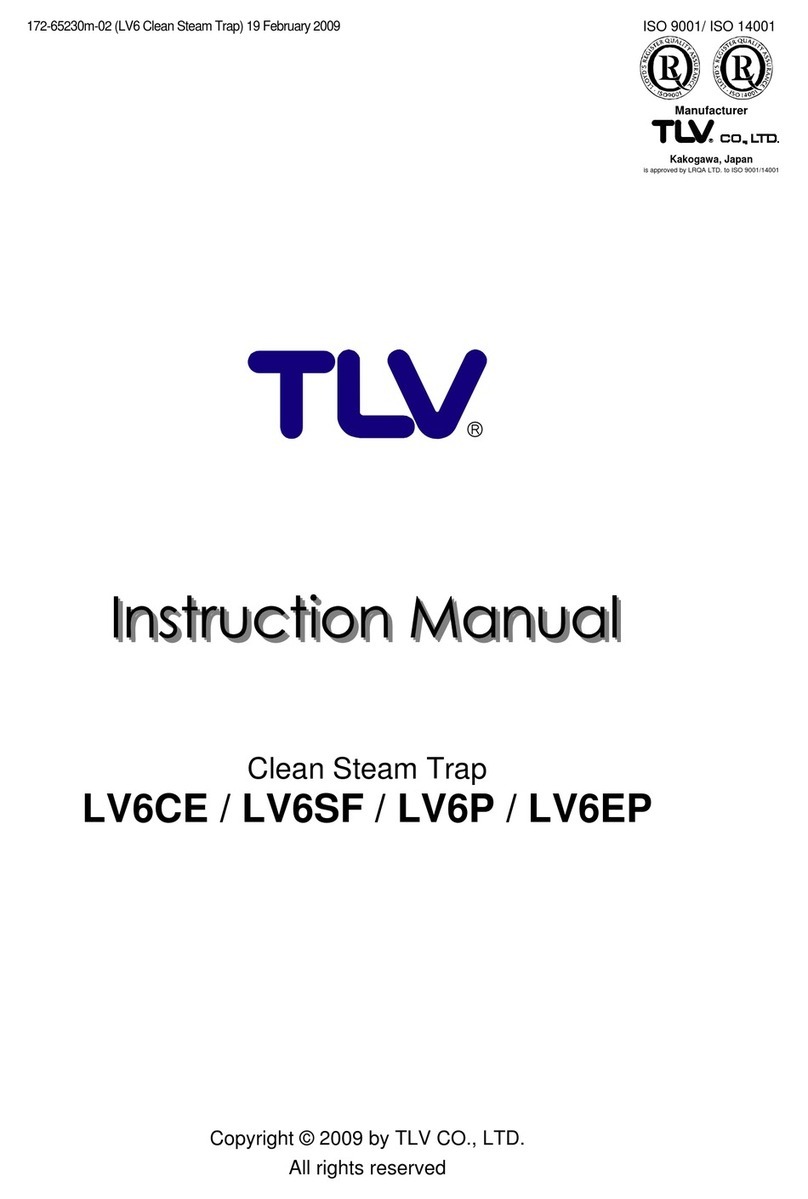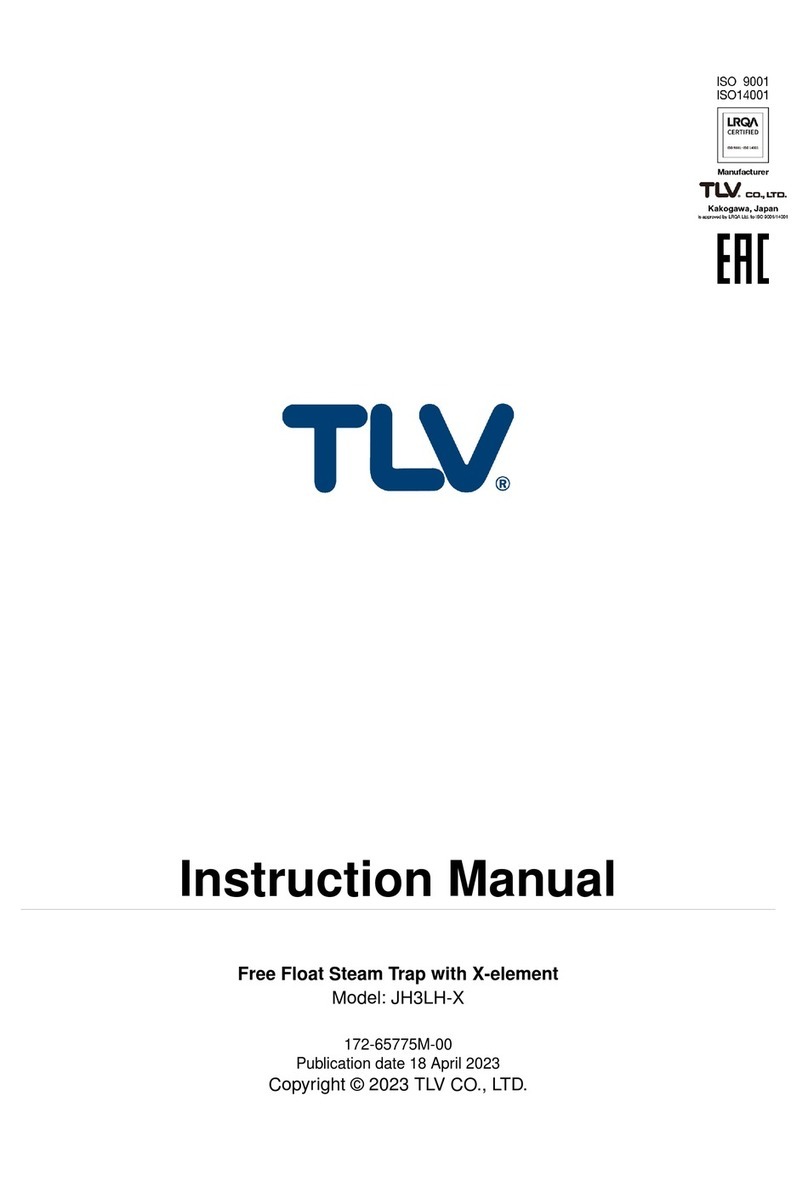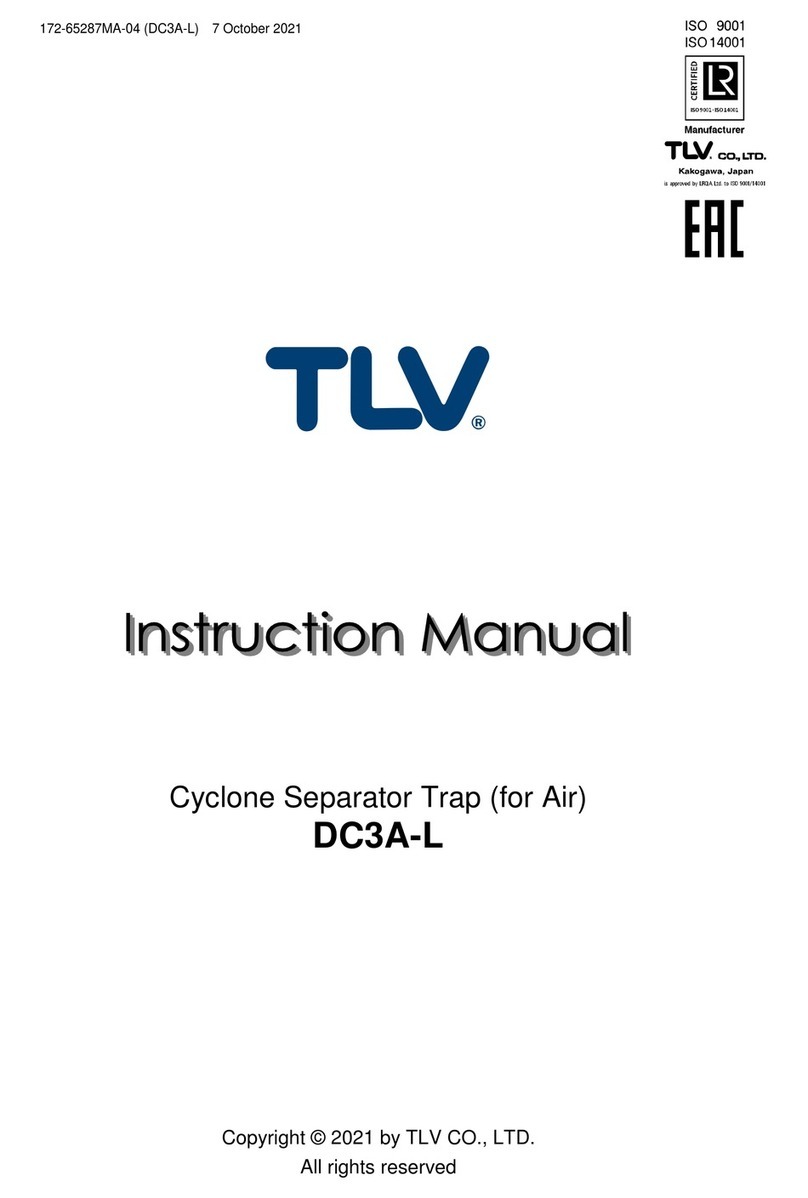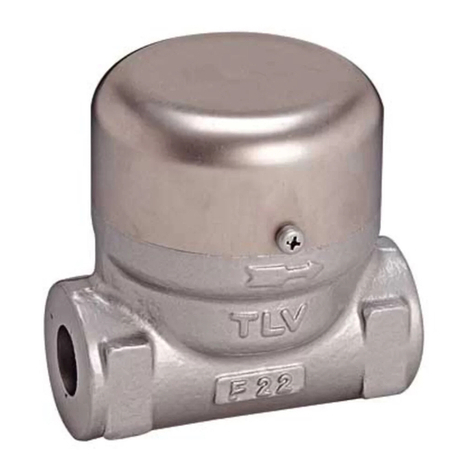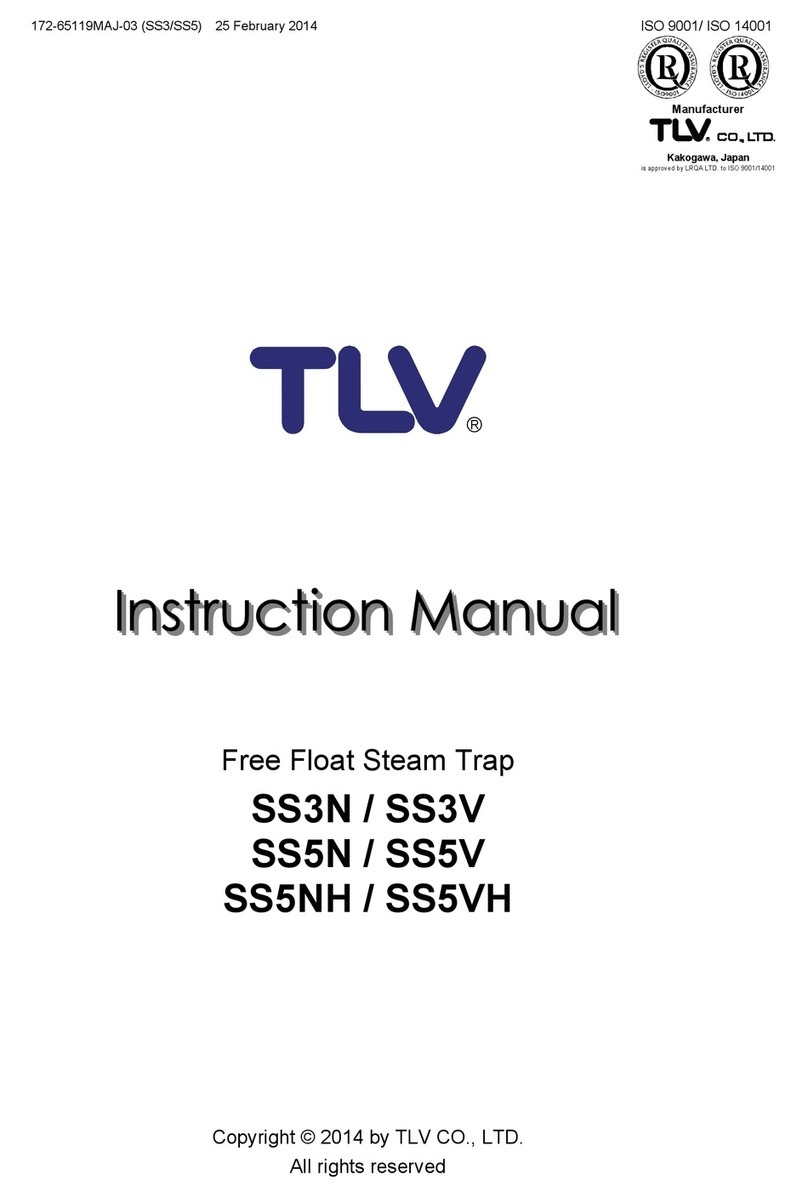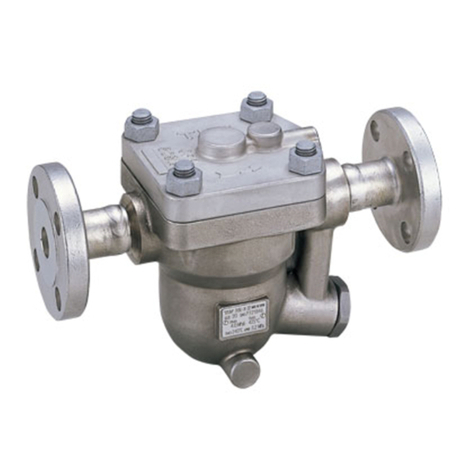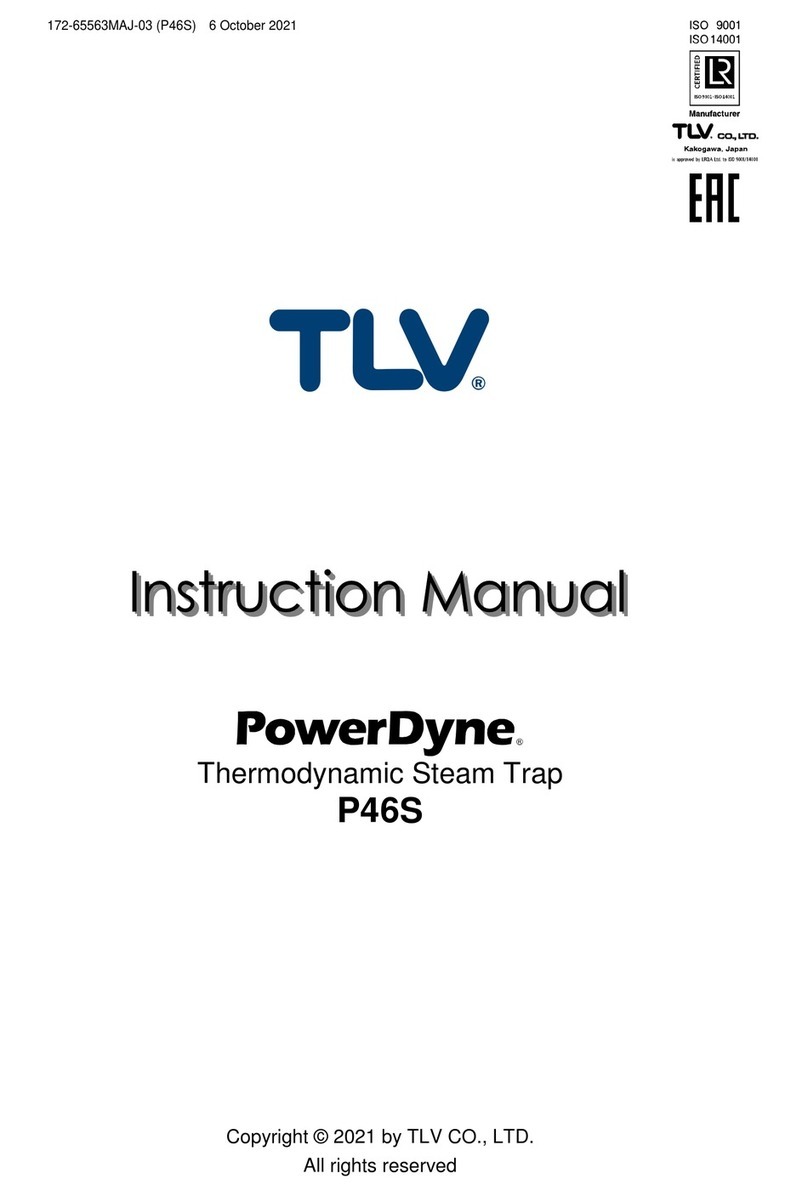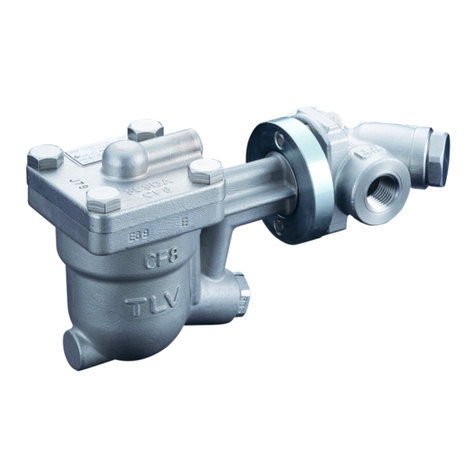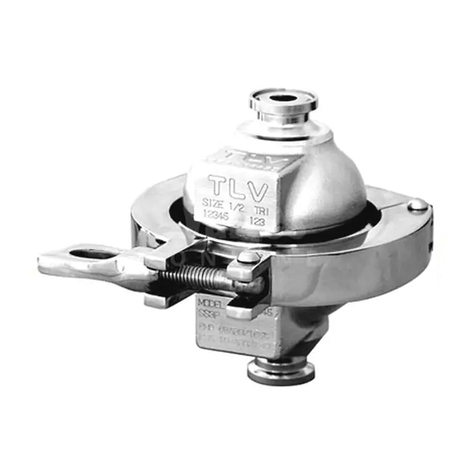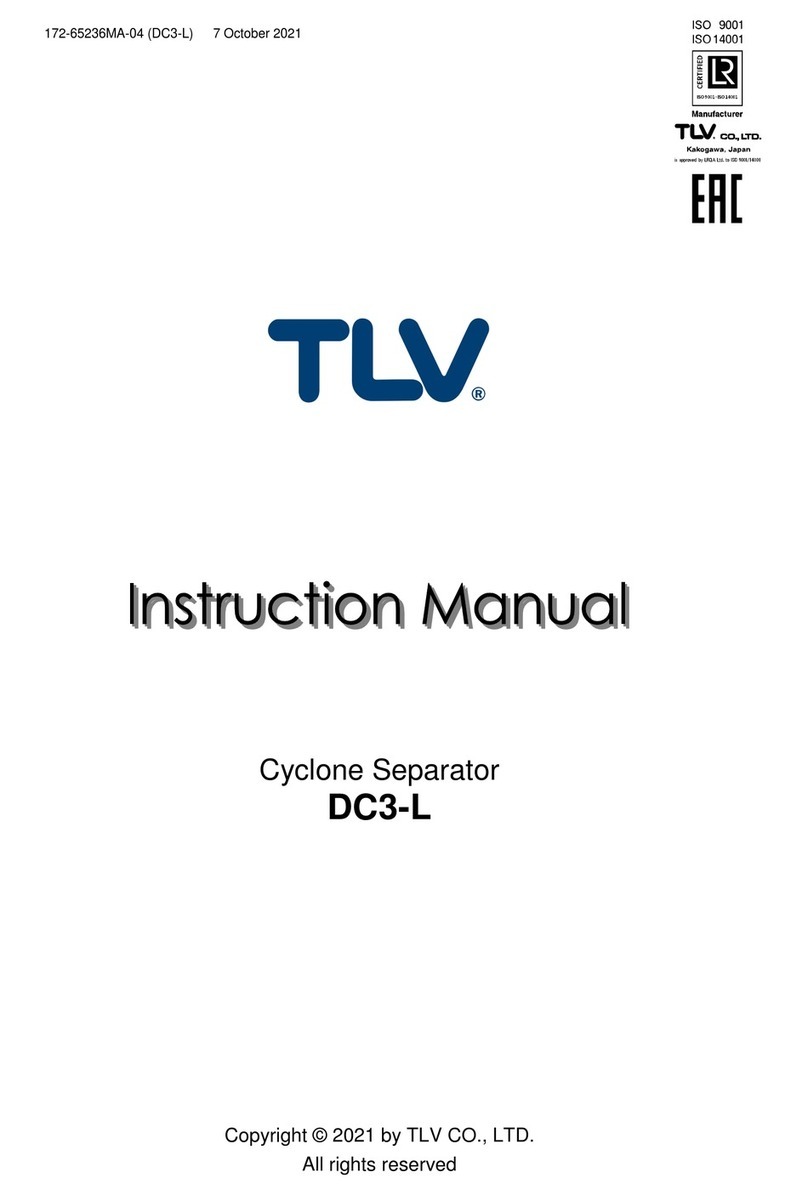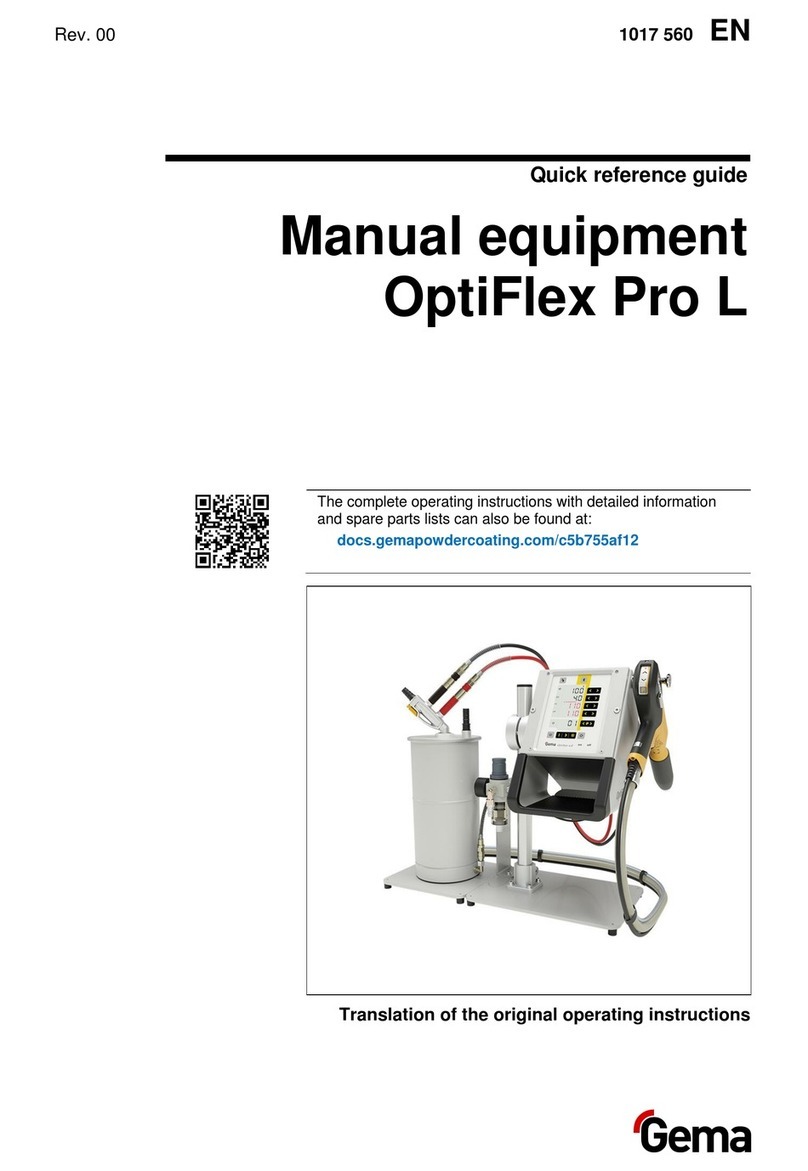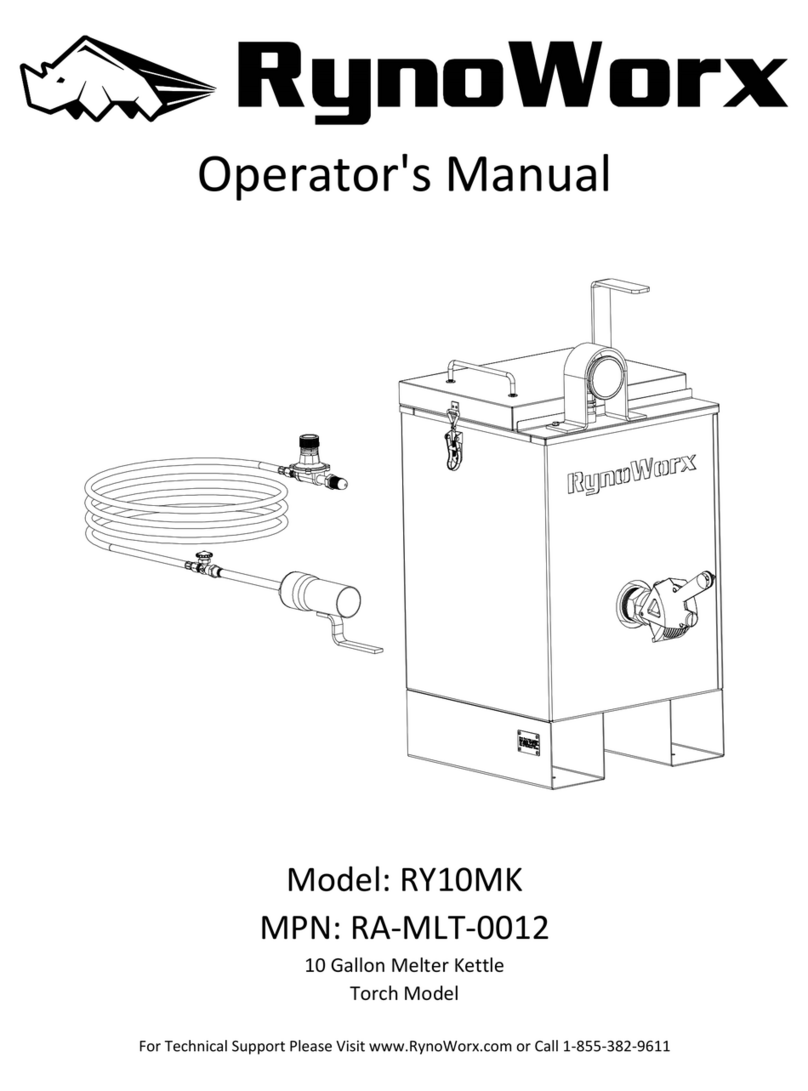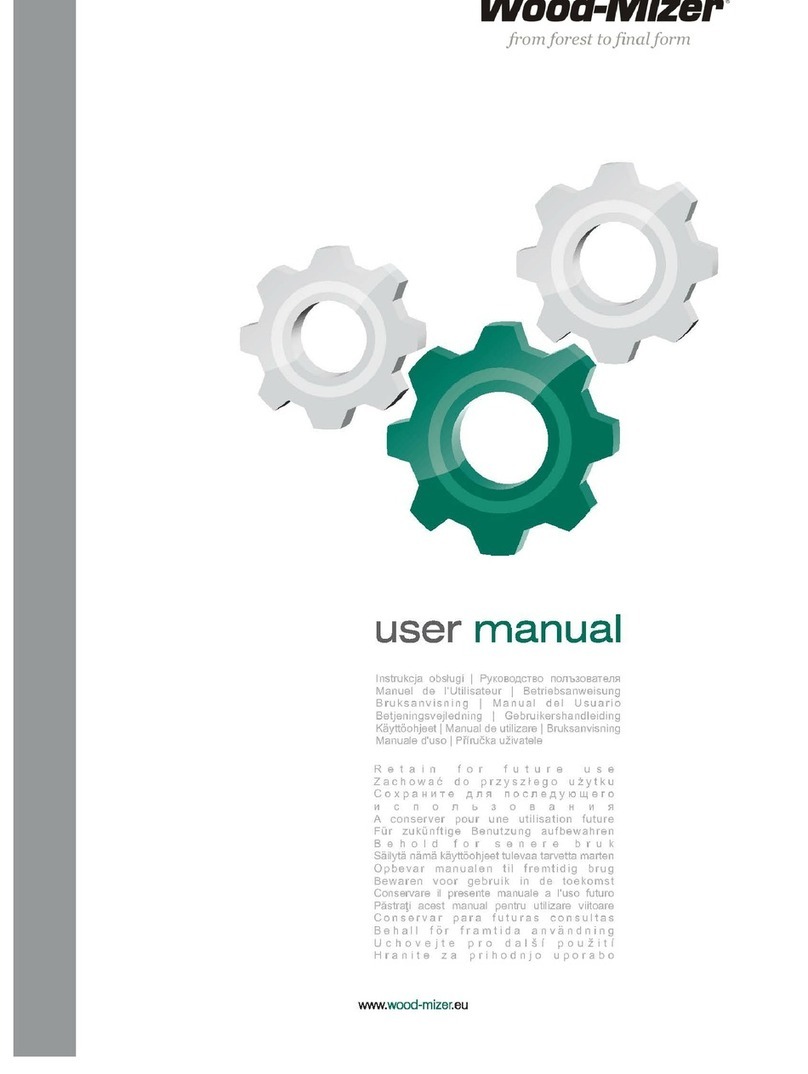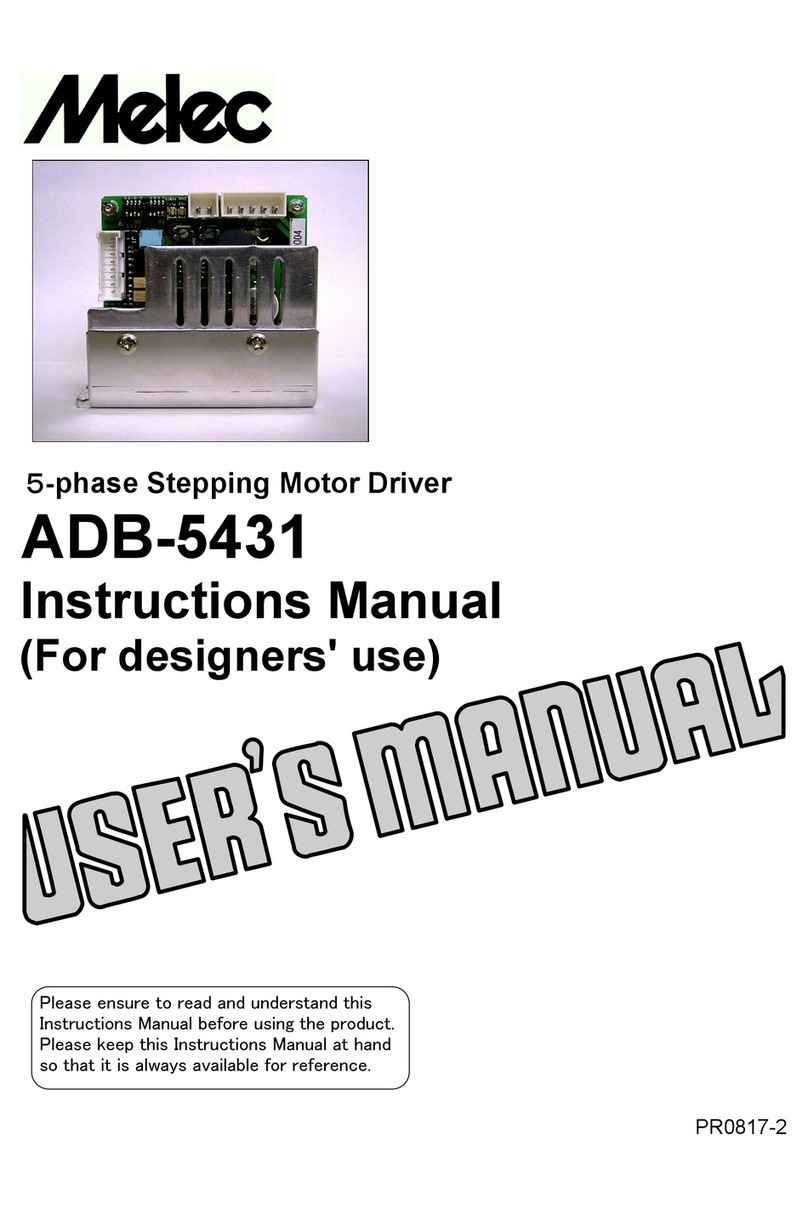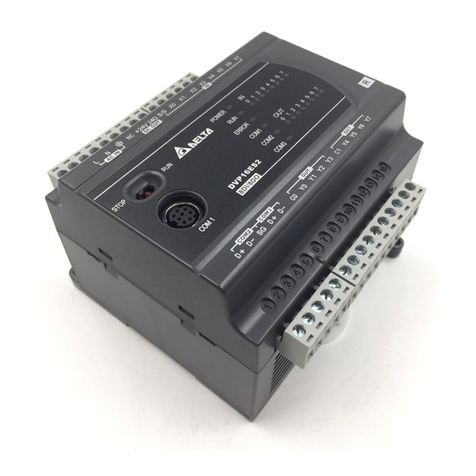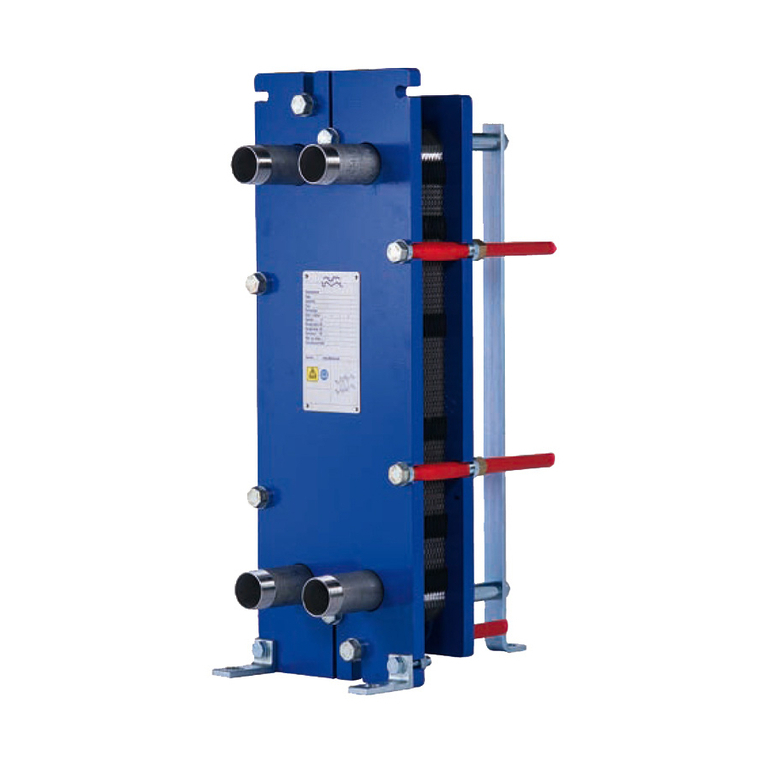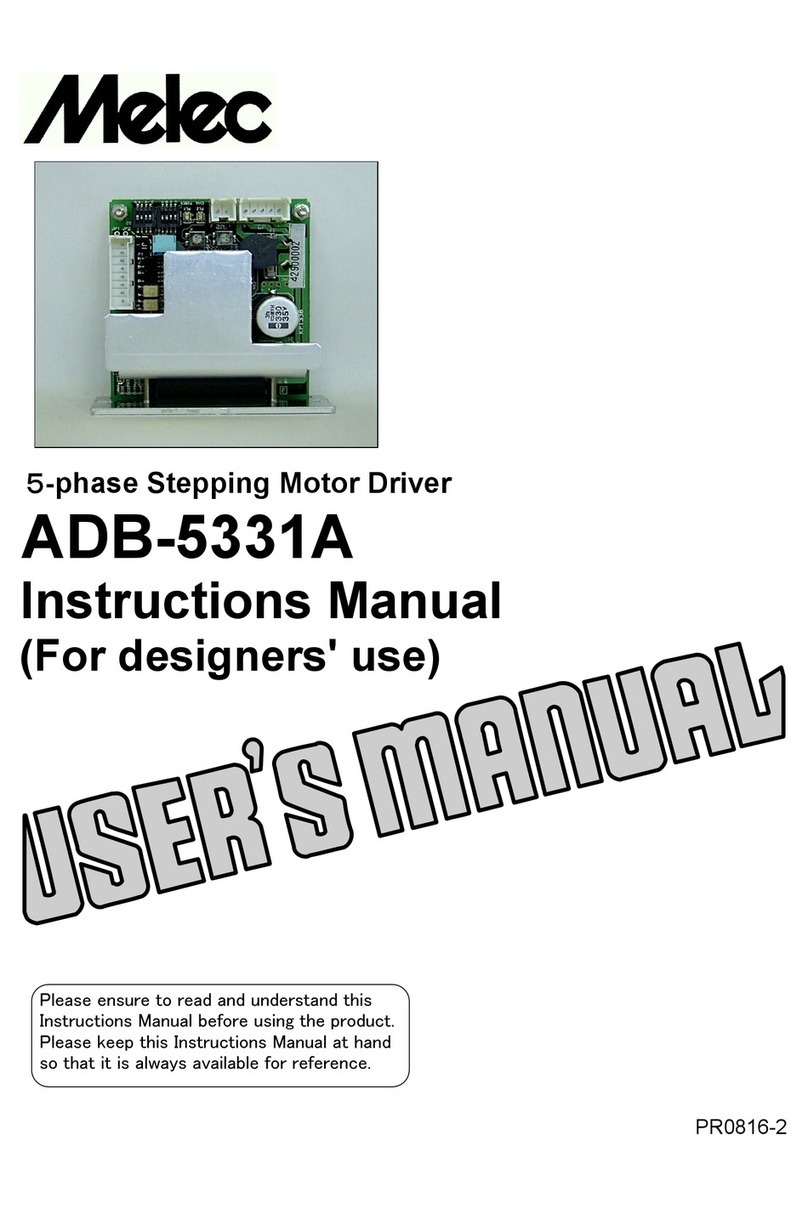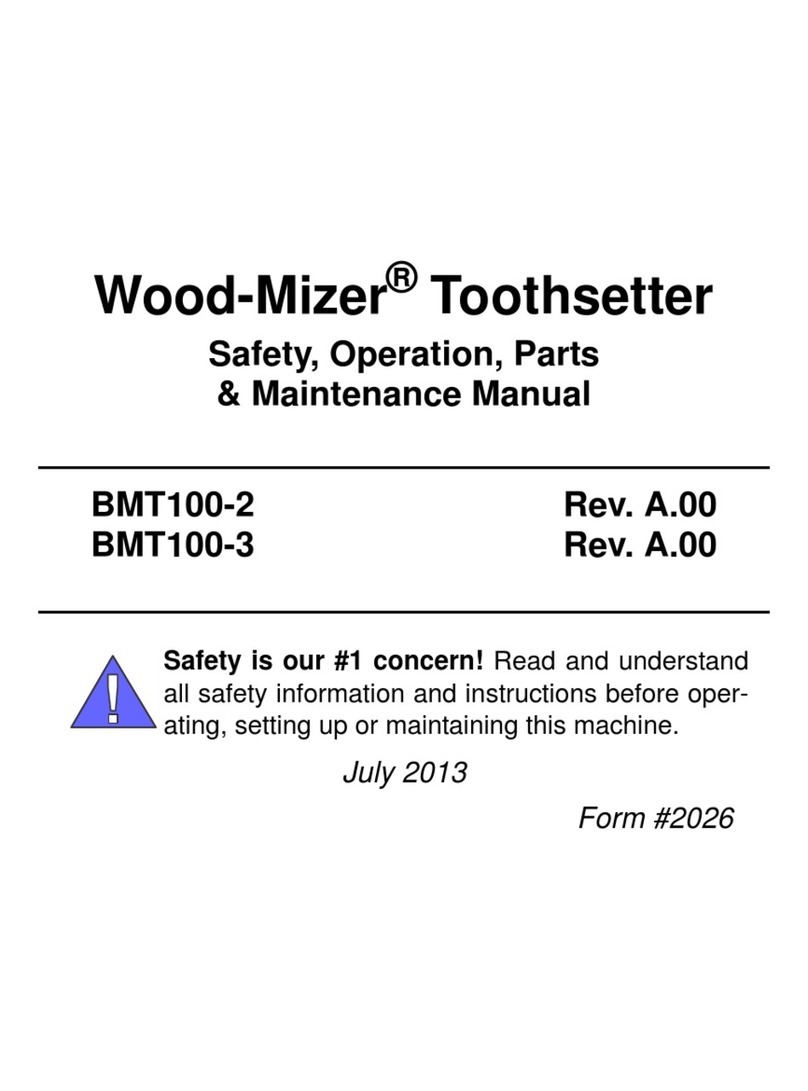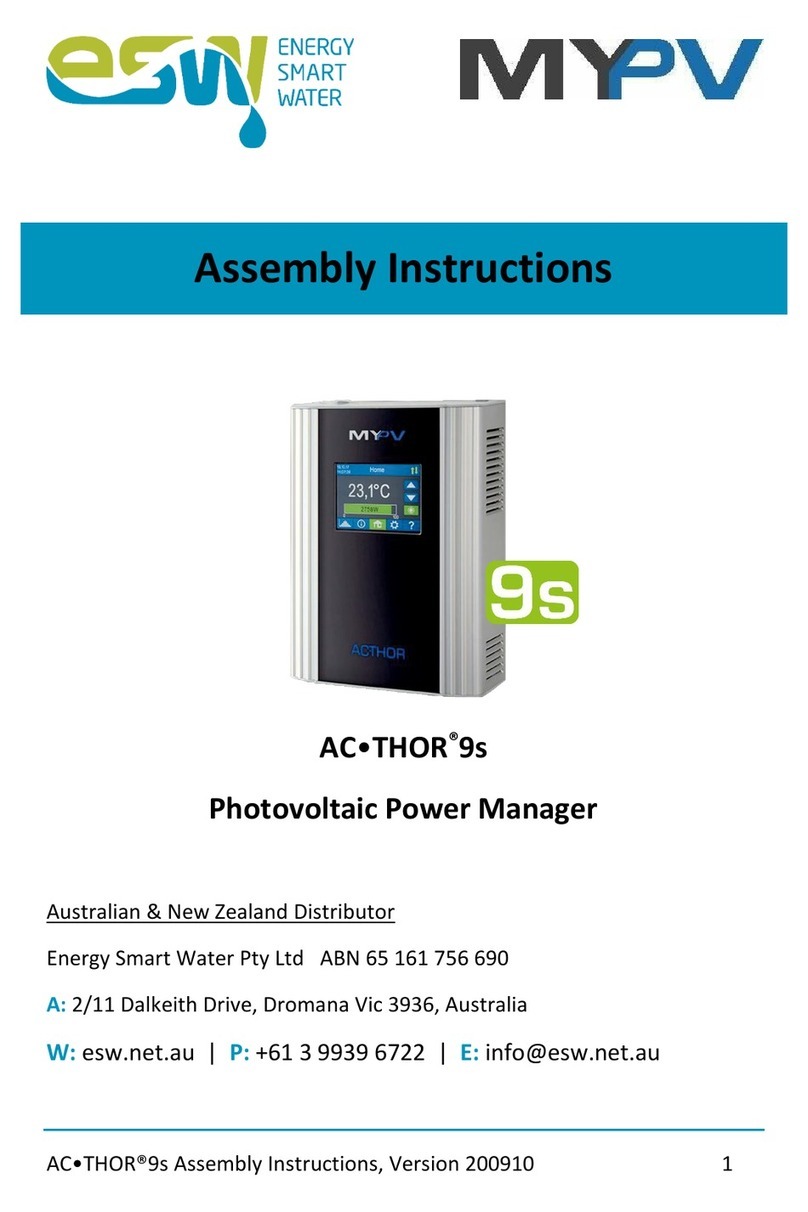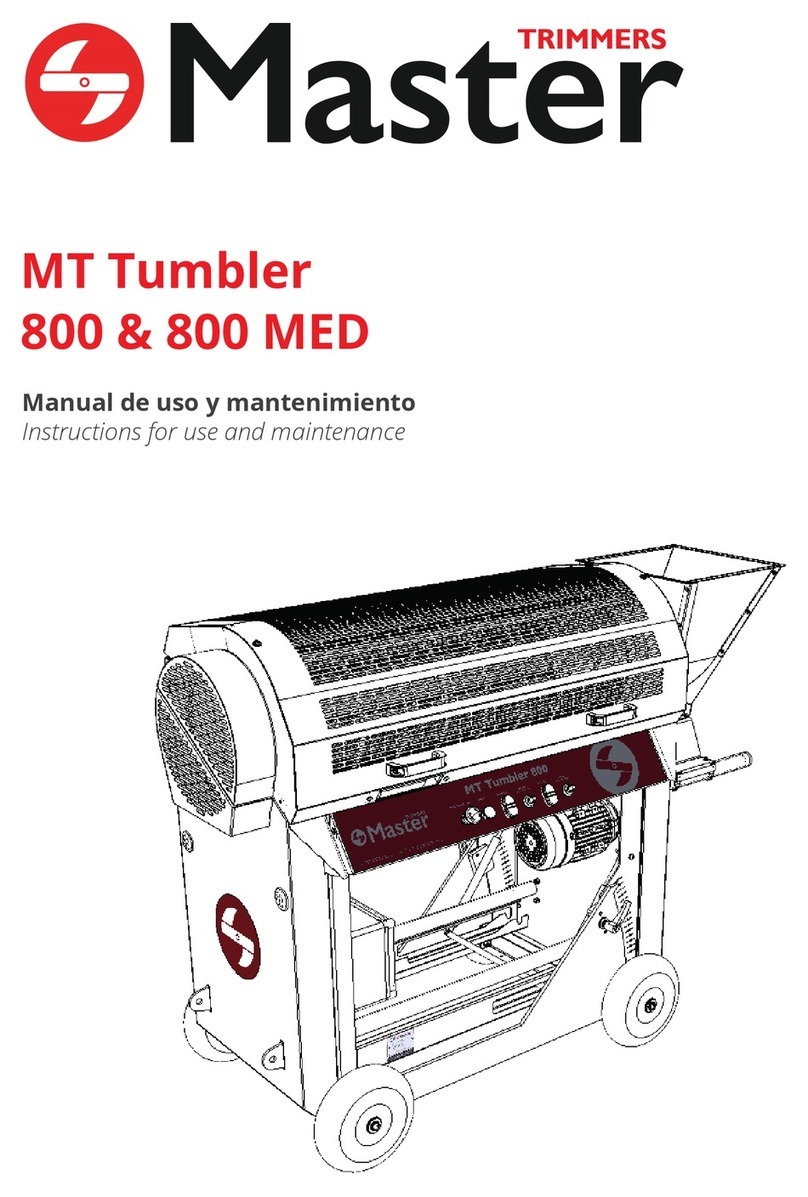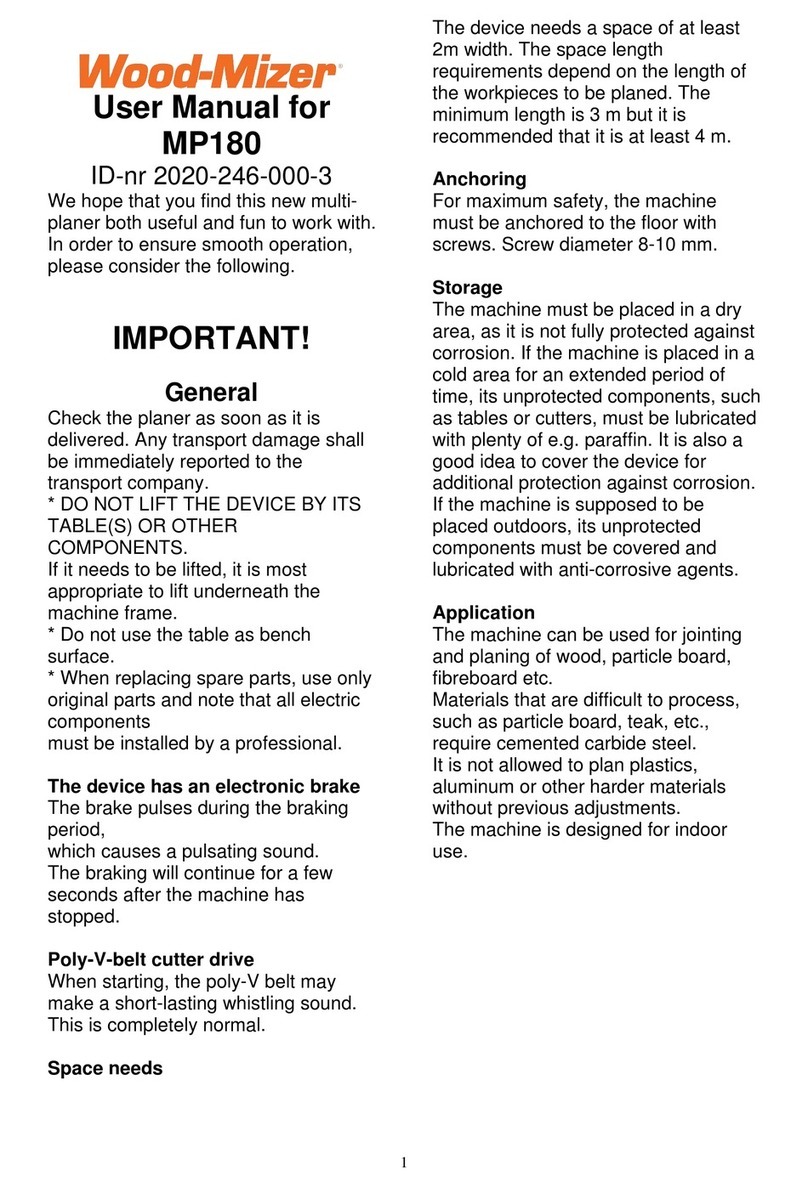TLV JH-X Series User manual

Deutsch
中
文
Français
English
FREE FLOAT TYPE STEAM TRAPS
JH-X SERIES
FREISCHWIMMER KONDENSATABLEITER
JH-X SERIE
PURGEURS DE VAPEUR À FLOTTEUR FERMÉ LIBRE
GAMME JH-X
自由浮球式蒸汽疏水阀
型号
JH-X
系列
JH3-X JH7RL-X
JH7.5R-XJH7.2R-X JH8R-X
JH5RL-X
INSTRUCTION MANUAL
Keep this manual in a safe place for future reference
EINBAU- UND BETRIEBSANLEITUNG
Gebrauchsanleitung leicht zugänglich aufbewahren
MANUEL D UTILISATION
Conserver ce manuel dans un endroit facile d'accès
操作说明书
请务必妥善保管此说明书,以备日后使用。
Copyright (C) 2019 by TLV CO., LTD. All rights reserved.

Introduction
Before beginning installation or maintenance, please read this manual to ensure correct use of
the product. Keep the manual in a safe place for future reference.
The inline repairable JH-X series steam traps with thermostatic air vent (X-element) are
suitable for a wide range of applications with small-to-large capacities and pressures up
to 3.2 MPaG (450 psig), such as all kinds of heat exchangers, process heaters and coils.
The traps discharge condensate continuously and automatically, at a temperature slightly lower
than saturation temperature.
1 MPa = 10.197 kg/cm2, 1 bar = 0.1 MPa
For products with special specifications or with options not included in this manual, contact TLV
for instructions.
The contents of this manual are subject to change without notice.
Einführung
Bitte lesen Sie die Betriebsanleitung vor Einbau und Inbetriebnahme sorgfältig durch und be-
wahren Sie sie für späteren Gebrauch an einem leicht zugänglichen Ort auf.
Die in der Leitung wartbaren Kugelschwimmer-Kondensatableiter der JH-X Serie, mit thermischem
Entlüfter (X-Element) können für alle Anlagengrößen und mit Betriebsdrücken bis 32 bar ü ein-
gesetzt werden. Sie eignen sich für Anwendungen, bei denen Kondensat mit geringer Unter-
kühlung unter Sattdampftemperatur abgeleitet werden soll, insbesondere für Wärmetauscher,
Prozessanlagen und Behälterbeheizungen aller Art.
1 bar = 0,1 MPa
Wenden Sie sich an TLV für Sonderausführungen, die nicht in dieser Einbau- und Betriebs-
anleitung enthalten sind.
Wir behalten uns vor, den Inhalt dieser Betriebsanleitung ohne Ankündigung zu ändern.
Introduction
Veuillez lire attentivement ce manuel afin d’utiliser correctement le produit.
Nous vous recommandons de le garder dans un endroit sûr pour de futures consultations.
Les purgeurs de vapeur de la gamme JH-X, avec purge d’air thermostatique (élément X),
sont réparables sans les démonter des tuyauteries, et peuvent être utilisés pour une large variété
d'applications jusqu'à 32 bar. Par exemple : process de chauffage, serpentins, échangeurs de
chaleur, etc. Les purgeurs évacuent le condensât en continu et automatiquement, légèrement
sous la température de saturation.
1 bar = 0,1 MPa
Pour tout produit aux spécifications particulières ou comportant des options non reprises dans ce
manuel, veuillez contacter TLV.
Le contenu de ce manuel est sujet à modifications sans préavis.
Deutsch
Français
English
1

1. Safety Considerations
―2―
• Read this section carefully before use and be sure to follow the instructions.
• Installation, inspection, maintenance, repairs, disassembly, adjustment and valve
opening/closing should be carried out only by trained maintenance personnel.
• The precautions listed in this manual are designed to ensure safety and prevent equipment
damage and personal injury. For situations that may occur as a result of erroneous handling,
three different types of cautionary items are used to indicate the degree of urgency and the
scale of potential damage and danger: DANGER, WARNING and CAUTION.
• The three types of cautionary items above are very important for safety; be sure to observe
all of them, as they relate to installation, use, maintenance, and repair. Furthermore, TLV
accepts no responsibility for any accidents or damage occurring as a result of failure to
observe these precautions.
Indicates an urgent situation
which poses a threat of
death or serious injury.
Indicates that there is a
potential threat of death
or serious injury.
WARNING
CAUTION
WARNING
DANGER CAUTION
Indicates that there is a
possibility of injury or equip-
ment/product damage.
NEVER apply direct heat to the float. The float may explode due to
increased internal pressure, causing accidents leading to serious injury
or damage to property and equipment.
Install properly and DO NOT use this product outside the recommended
operating pressure, temperature and other specification ranges.
Improper use may result in such hazards as damage to the product or
malfunctions, which may lead to serious accidents. Local regulations may
restrict the use of this product to below the conditions quoted.
Take measures to prevent people from coming into direct contact
with product outlets. Failure to do so may result in burns or other injury
from the discharge of fluids.
Use hoisting equipment for heavy objects (weighing approximately
20 kg (44 lb) or more). Failure to do so may result in back strain or other
injury if the object should fall.
Use the eyebolts for removing the cover only; DO NOT use the
eyebolts for hoisting the product. Eyebolts may break under strain,
possibly resulting in serious injury.
DO NOT use this product in excess of the maximum operating
pressure differential. Such use could make discharge impossible.
When disassembling or removing the product, wait until the internal
pressure equals atmospheric pressure and the surface of the
product has cooled to room temperature. Disassembling or removing
the product when it is hot or under pressure may lead to discharge of
fluids, causing burns, other injuries or damage.
Be sure to use only the recommended components when repairing
the product, and NEVER attempt to modify the product in any way.
Failure to observe these precautions may result in damage to the product
or burns or other injury due to malfunction or the discharge of fluids.
Use only under conditions in which no freeze-up will occur. Freezing
may damage the product, leading to fluid discharge, which may cause
burns or other injury.
Use under conditions in which no water hammer will occur. The
impact of water hammer may damage the product, leading to fluid
discharge, which may cause burns or other injury.
English

Die Schwimmerkugel darf NICHT ERHITZT werden, da sie infolge
erhöhten Innendruckes platzen kann, was schwere Unfälle und
Verletzungen oder Beschädigung von Anlagen zur Folge hat.
1. Sicherheitshinweise
• Bitte lesen Sie dieses Kapitel vor Beginn der Arbeiten sorgfältig durch und befolgen Sie die
Vorschriften.
• Einbau und Ausbau, Inspektion, Wartungs- und Reparaturarbeiten, Öffnen/Schließen von
Armaturen, Einstellung von Komponenten, dürfen nur von geschultem Wartungspersonal
vorgenommen werden.
• Die Sicherheitshinweise in dieser Einbau- und Betriebsanleitung dienen dazu, Unfälle,
Verletzungen, Betriebsstörungen und Beschädigungen der Anlagen zu vermeiden. Für
Gefahrensituationen, die durch falsches Handeln entstehen können, werden drei verschiedene
Warnzeichen benutzt: GEFAHR; WARNUNG; VORSICHT.
• Diese drei Warnzeichen sind wichtig für Ihre Sicherheit. Sie müssen unbedingt beachtet werden,
um den sicheren Gebrauch des Produktes zu gewährleisten und Einbau, Wartung und
Reparatur ohne Unfälle oder Schäden durchführen zu können. TLV haftet nicht für Unfälle oder
Schäden, die durch Nichtbeachtung dieser Sicherheitshinweise entstehen.
Bedeutet, dass eine unmittel-
bare Gefahr für Leib und
Leben besteht.
Bedeutet, dass die
Möglichkeit der Gefahr für
Leib und Leben besteht.
VORSICHT
WARNUNG
GEFAHR
WARNUNG
VORSICHT
Bedeutet, dass die Möglichkeit
von Verletzungen oder Schäden an
Anlagen oder Produkten besteht.
Die Einbauhinweise beachten und die spezifizierten Betriebsgrenzen
NICHT ÜBERSCHREITEN. Nichtbeachtung kann zu Betriebsstörungen
oder Unfällen führen. Lokale Vorschriften können zur Unterschreitung der
angegebenen Werte zwingen.
In sicherer Entfernung von Auslassöffnungen aufhalten und andere
Personen warnen, sich fernzuhalten. Nichtbeachtung kann zu
Verletzungen durch austretende Fluide führen.
Nur in frostsicherer Umgebung einsetzen. Einfrieren kann das Produkt
beschädigen, was zu Verbrennungen oder Verletzungen durch
austretende Fluide führt.
Nur an Stellen einbauen, an denen kein Wasserschlag eintreten
kann. Wasserschlag kann das Produkt beschädigen und zu
Verbrennungen oder Verletzungen durch austretende Fluide führen.
Für schwere Werkstücke (ca. 20 kg oder mehr) werden Hebezeuge
dringend empfohlen. Nichtbeachtung kann zu Rückenverletzungen oder
Verletzungen durch das herunterfallende Werkstück führen.
Die Ringschrauben nur zum Abheben des Gehäusedeckels benutzen,
NICHT zum Heben des gesamten Produkts. Ringschrauben können
unter Belastung brechen, was zu schweren Unfällen führen kann.
Maximalen Differenzdruck NICHT ÜBERSCHREITEN,
da sonst die Kondensatableitung unmöglich werden kann (Blockage).
Vor Öffnen des Gehäuses und Ausbau von Teilen warten, bis der
Innendruck sich auf Atmosphärendruck gesenkt hat und das
Gehäuse auf Raumtemperatur abgekühlt ist. Nichtbeachtung kann zu
Verbrennungen oder Verletzungen durch austretende Fluide führen.
Zur Reparatur nur Original-Ersatzteile verwenden und NICHT
VERSUCHEN, das Produkt zu verändern. Nichtbeachtung kann zu
Beschädigungen führen, die Betriebsstörungen, Verbrennungen oder
andere Verletzungen durch austretende Fluide verursachen.
―3―
Deutsch

1. Règles de sécurité
• Lire attentivement cette notice avant utilisation et suivre les instructions.
• Tout installation, inspection, entretien, réparation, démontage, réglage et
ouverture/fermeture de vanne doit être fait uniquement par une personne formée à l’entretien.
• La liste des précautions à prendre est établie afin d'assurer votre sécurité et de prévenir des
dégâts matériels et/ou des blessures sérieuses. Dans certaines situations causées par une
mauvaise manipulation, trois indicateurs sont utilisés afin d'indiquer le degré d'urgence,
l'échelle du dommage potentiel et le danger : DANGER, AVERTISSEMENT et ATTENTION.
• Ces 3 indicateurs sont importants pour votre sécurité ; observez les précautions de sécurité
énumérées dans ce manuel pour l'installation, l'utilisation, l'entretien et la réparation du produit.
TLV n'accepte aucune responsabilité en cas d'accident ou de dommage survenant à la suite
d'un non-respect de ces précautions.
Indique une situation
d'urgence avec risque de
mort ou de blessure grave.
Indique une situation
pouvant entraîner la mort ou
des blessures graves.
AVERTISSEMENT
ATTENTION
AVERTISSEMENT
DANGER
ATTENTION
Indique un risque de blessure
ou de dégât matériel au
produit et/ou aux installations.
Installer le produit correctement et NE PAS l’utiliser en dehors de la
pression et de la température maximales de fonctionnement, ni en
dehors des autres plages spécifiées. Une telle utilisation peut entraîner
des dommages au produit ou des dysfonctionnements, ce qui peut
provoquer des brûlures ou autres blessures. Il se peut que des règlements
locaux limitent l'utilisation du produit en-deçà des spécifications indiquées.
NE JAMAIS exposer le flotteur à la chaleur directement. Il pourrait
exploser suite à une pression interne accrue et causer des accidents
pouvant entraîner des blessures sérieuses ou des dégâts matériels.
Prendre les mesures appropriées afin d’éviter que des personnes
n’entrent en contact direct avec les ouvertures du produit. Le non-
respect de cette règle peut provoquer des brûlures ou autres blessures
sérieuses dues à l'écoulement des fluides.
En cas de démontage ou de manipulation du produit, attendre que
la pression interne soit égale à la pression atmosphérique et que la
surface du produit soit complètement refroidie. Le non-respect de
cette règle peut provoquer des brûlures ou autres dommages dus à
l'écoulement des fluides.
En cas de réparation utiliser uniquement les pièces recommandées
et NE JAMAIS ESSAYER de modifier le produit. Le non- respect de
cette règle peut entraîner des dommages au produit, ou des brûlures et
autres blessures sérieuses dues au dysfonctionnement du produit ou à
l'écoulement des fluides.
Utiliser le produit dans des conditions où il n'y a aucun coup de
bélier. L'impact d'un coup de bélier peut endommager le produit et
provoquer l’écoulement des fluides, ainsi que des brûlures ou des
blessures graves.
Utiliser du matériel de levage adéquat pour les objets lourds (20 kg
et plus). Le non-respect de cette règle peut provoquer des douleurs
dans le dos ou des blessures si le produit venait à tomber.
Utiliser les anneaux de levage uniquement pour retirer le couvercle ;
NE PAS les utiliser pour soulever le produit. Ils peuvent se casser en
cas de surcharge, ce qui pourrait causer des blessures sérieuses.
NE PAS utiliser ce produit avec une pression différentielle
supérieure au maximum indiqué. Le non-respect de cette consigne
pourrait empêcher toute expulsion du condensât (blocage).
N’utiliser que dans des conditions où le gel ne se produit pas. Le gel
peut endommager le produit et provoquer l'écoulement des fluides, et
causer des brûlures ou autres blessures sérieuses.
4
Français

2. Configuration Aufbau Configuration
JH3-X JH5RL-X
JH7.2R-X
@4
@6
@3
A
@4
@6
@3
A
!1!8 e
!0 !5w !7 !4
!9 !6
o
@3 !2
@1 r tq
@2 y i u
w
o
e
@0
!7 !0 !9 !6 !5 !4 !2
yt i u
r
q @1@2 @1@2
!8 !1 !6!7
r
qi
!0 w !4 !5 !3 !2
e
t
yu
o
@0
JH7RL-X
o!0
!1 !4!7 !9 !5w !6 !2e !3
!8 @3 r@2@1 q y it u
Deutsch
Français
English
!0
!1 w !9 oe
tr
q
@1 y i u
@9 !1
!0 o!9 !3w
q
tr y ui #2 #1
JH7.5R-X JH8R-X
@2 @1 @2

No.
1
2
3
4
5
6
7
8
9
10
11
No.
12
13
14
15
16
17
18
19
20
21
22
Body
Cover
Cover Gasket
Float
Orifice
Orifice Gasket
Orifice Plug or Outlet Cover
Plug or Outlet Cover Gasket
Screen
Cover Bolt
Cover Nut
Connector
Connector Gasket
X-element
X-element Guide
Air Vent Valve Seat
Spring Clip
Flange or Socket
Nameplate
Float Cover
Drain Plug*
Drain Plug Gasket*
Description Description No.
23
24
25
26
27
28
29
30
31
32
Screen Holder
Snap Ring
Snap Ring
Screen Holder Retainer
X-element Case
X-element Screen
Eye Bolt
X-element Case Gasket
Outlet Cover Bolt
Outlet Cover Nut
Description
* Option for JH3-X, JH5RL-X
Nr.
1
2
3
4
5
6
7
8
9
10
11
Nr.
12
13
14
15
16
17
18
19
20
21
22
Gehäuse
Gehäusedeckel
Gehäusedichtung
Schwimmerkugel
Ventilsitz
Ventilsitzdichtung
Ventilsitzstopfen oder -deckel
Stopfen-oder Deckeldichtung
Schmutzsieb
Gehäuseschraube
Gehäusemutter
Verbindungshülse
Dichtung Verbindungshülse
X-Element
X-Elementführung
Entlüfterventilsitz
Spannbügel
Flansch oder Muffe
Typenschild
Schwimmerabdeckung
Entwässerungsstopfen*
Stopfendichtung*
Bauteil Bauteil Nr.
23
24
25
26
27
28
29
30
31
32
Siebhalterung
Spannring
Spannring
Abstandsring
X-Elementgehäuse
X-Element-Schmutzsieb
Ringschraube
X-Elementgehäusedichtung
Deckelschraube
Deckelmutter
Bauteil
* Option für JH3-X, JH5RL-X
N°
1
2
3
4
5
6
7
8
9
10
11
N°
12
13
14
15
16
17
18
19
20
21
22
Corps
Couvercle
Joint de couvercle
Flotteur
Orifice
Joint d’orifice
Bouchon ou couvercle d’orifice
Joint de bouchon ou de couvercle
Crépine
Boulon de couvercle
Écrou de couvercle
Tube guide
Joint du tube guide
Élément X
Guide de I’élément X
Siège purge d'air
Clip à ressort
Bride ou douille
Plaquette nominative
Capot de flotteur
Bouchon de vidange*
Joint de bouchon*
Désignation Désignation N°
23
24
25
26
27
28
29
30
31
32
Porte-crépine
Anneau élastique
Anneau élastique
Bague d’écartement
Boîtier élément X
Crépine élément X
Anneau de levage
Joint boîtier élément X
Boulon de couvercle d'orifice
Écrou de couvercle d'orifice
Désignation
* Option pour JH3-X, JH5RL-X
A
@7
!4
#0
!6
!7
@8
@5
Connection Anschluss Raccordements
Screwed
Muffe
Taraudé
Socket Welded
Schweißmuffe
Douille à souder
Flanged: see page 5 Flansch: siehe Seite 5 À brides : voir page 5
6
Deutsch
Français
English

3. Specifications Technische Daten Données techniques
Refer to the product nameplate for detailed specifications.
Die technischen Daten stehen auf dem Typenschild.
Les données techniques sont inscrites sur la plaquette nominative.
* Maximum allowable pressure (PMA) and maximum allowable temperature (TMA) are
PRESSURE SHELL DESIGN CONDITIONS, NOT OPERATING CONDITIONS.
** "Valve No." is displayed for products with options. This item is omitted from the
nameplate when there are no options.
* Maximal zulässiger Druck (PMA) und maximal zulässige Temperatur (TMA) sind
AUSLEGUNGSDATEN, NICHT BETRIEBSDATEN.
** Die "Valve No." wird angegeben bei Typen mit Optionen. Bei Typen ohne Optionen bleibt
diese Stelle frei.
* Pression maximale admissible (PMA) et température maximale admissible (TMA) sont les
CONDITIONS DE CONCEPTION, PAS LES CONDITIONS DE FONCTIONNEMENT.
** Le "Valve No." est indiqué sur les modèles avec options. Ce numéro ne figure pas sur les
modèles sans options.
G
Production Lot No.
Fertigungslos-Nr.
Lot de production n°
H Valve No.**
C Maximum Allowable Pressure*
Maximal zulässiger Druck*
Pression maximale admissible*
F Maximum Operating Temperature
Maximale Betriebstemperatur
Temp. de fonctionnement maximale
D Maximum Allowable Temperature* TMA
Maximal zulässige Temperatur* TMA
Température maximale admissible* TMA
A Model
Typ
Modèle
E Maximum Differential Pressure
Maximaler Differenzdruck
Pression différentielle maximale
B Nominal Diameter
Größe/DN
Dimension/DN
To avoid malfunctions, product damage, accidents or serious injury, install
properly and DO NOT use this product outside the specification range. Local
regulations may restrict the use of this product to below the conditions quoted.
CAUTION
Die Einbauhinweise beachten und die spezifizierten Betriebsgrenzen NICHT
ÜBERSCHREITEN. Nichtbeachtung kann zu Betriebsstörungen oder Unfällen führen.
Lokale Vorschriften können zur Unterschreitung der angegebenen Werte zwingen.
VORSICHT
Installer le produit correctement et NE PAS l’utiliser en dehors des plages
spécifiées. En cas de dépassement des limites données, des dysfonc-
tionnements ou accidents pourraient survenir. Il se peut que des règlements
locaux limitent l'utilisation du produit en-deçà des spécifications indiquées.
ATTENTION
B
A
G
D
E
H
C
F
A
D
E
H
C
B
F
G
7
Deutsch
Français
English

―8―
5. Piping Arrangement
Requirement
Install a catchpot with the
proper diameter.
Diameter is too
small.
Diameter is too
small and inlet
protrudes into pipe.
Rust and scale
flow into the trap
with the
condensate.
Condensate
collects in the
pipe.
Continued on next page
Make sure the flow of
condensate is not
obstructed.
To prevent rust and scale
from flowing into the trap,
connect the inlet pipe
25 - 50 mm (1 - 2 in) above
the base of the T - pipe.
When installing on the
blind end, make sure
nothing obstructs the flow
of condensate.
Correct Incorrect
Allowable
Horizontal lnclination
Allowable
Vertical lnclination
1.
Before installation, be sure to remove all protective seals.
2.
Before installing the trap, blow out the inlet piping to remove all dirt and oil.
3. When hoisting the product, hang the rope around the inlet/outlet as close to the body as
possible.
4. Install the steam trap within the allowable inclination, as shown below. Also make sure that
the arrow mark on the body corresponds with the direction of flow.
5.
Install the trap in the lowest part of the pipeline or equipment so the condensate flows naturally
into the trap by gravity. The inlet pipe should be as short and have as few bends as possible.
6.
Support the pipes properly within 800 mm (2.5 ft) on either side of the trap.
7.
Install a bypass valve to discharge condensate, and inlet and outlet valves to isolate the trap in
the event of trap failure or when performing maintenance.
8.
Install a check valve at the trap outlet whenever more than one trap is connected to the
condensate collection pipeline.
9.
The use of unions is recommended to facilitate connection and disconnection of screwed
models.
4. Proper Installation
• Installation, inspection, maintenance, repairs, disassembly, adjustment
and valve opening/closing should be carried out only by trained
maintenance personnel.
• Use the eyebolts for removing the cover only; DO NOT use the eyebolts
for hoisting the product.
• Take measures to prevent people from coming into direct contact with
product outlets.
• Install for use under conditions in which no freeze-up will occur.
• Install for use under conditions in which no water hammer will occur.
CAUTION
5˚
5˚
5˚ 5˚
English

1. Is the pipe diameter suitable?
2. Has the trap been installed within the allowable inclination and with the arrow on the body
pointing in the direction of flow?
3. Has sufficient space been secured for maintenance?
4. Have maintenance valves been installed at the inlet and outlet? If the outlet is subject to
back pressure, has a check valve been installed?
5. Is the inlet pipe as short as possible, with as few bends as possible, and installed so that the
condensate will flow naturally down into the trap?
6. Has the piping work been done with the proper methods, as shown in the table on page 8?
Check to make sure that the pipes connected to the trap have been installed properly.
Operational inspections should be performed at least twice per year, or as called for by trap
operating conditions. Steam trap failure may result in temperature drop in the equipment, poor
product quality or losses due to steam leakage.
6. Inspection and Maintenance
WARNING
NEVER apply direct heat to the float. The float may explode due to
increased internal pressure, causing accidents leading to serious injury or
property and equipment damage.
• Installation, inspection, maintenance, repairs, disassembly, adjustment
and valve opening/closing should be carried out only by trained
maintenance personnel.
• Before attempting to open the trap, close the inlet and outlet isolation
valves and wait until the trap has cooled completely. Failure to do so
may result in burns.
• Be sure to use the proper components and NEVER attempt to modify
the product.
CAUTION
Body, Cover(s)
Gaskets
X-element
Screen(s)
Float
Air Vent Valve Seat, Orifice
Check inside for damage, dirt, grease, oil film, rust or scale
Check for warping or damage
Check for damage
Check for clogging, corrosion or damage
Check for deformation, damage, oil film or water inside
Check for rust, scale, oil film, wear or damage
Parts Inspection Procedure
―9―
English

Disassembly/Reassembly (to reassemble, follow procedures in reverse)
JH3X
JH5RL-X JH7RL-X JH7.2R-X
Part & No.
JH7.5R-X
JH8R-X
Use a wrench to
remove
Remove gasket and
clean sealing surfaces
Remove gasket and
clean sealing surfaces
Use a wrench to
remove
Remove gasket and
clean sealing surfaces
Use a wrench to
remove
Remove gasket and
clean sealing surfaces
Use appropriate pliers,
squeeze and remove
Remove from the guide
or case
Use a wrench to
remove
Lift straight up
while turning
Use a wrench to
remove
Remove gasket and
clean sealing surfaces
Use a wrench to
remove
Remove the connector
Use appropriate pliers
Use appropriate pliers
Lift straight up
Remove
Remove screen
Lift up and off (use all
four eyebolts for
JH8R-X)
Remove, being careful
not to scratch its
polished surface
Disassembly
Reassembly
**
**
****
****
****
****
****
****
******
******
******
******
******
Coat threads with anti-seize
and tighten to the proper torque
Place screen holder on ledge
inside body, round side up;
place screen holder retainer
next (if applicable), followed by
screen
Coat threads with anti-seize and
tighten to the proper torque
Insert screen securely
Fix with Air Vent Valve Seat
Insert securely into groove
Cover 2
Cover Gasket 3
Connector 12
Connector
Gasket 13
Drain Plug 21
X-element
Case 27
X-element Case
Gasket 30
Snap Ring 25
Spring Clip 17
(X-element)
X-element 14
Air Vent Valve
Seat 16
X-element
Guide 15
Screen 9 &
Float Cover 20
Screen Holder 23
Float 4
Outlet Cover 7
Plug or Outlet
Cover Gasket 8
Orifice 5
* Option
** The entire unit may be removed and replaced at the X-element guide 15 with an open wrench.
*** Must remove X-element Case 27 before this part can be removed or inserted
Remove gasket and
clean sealing surfaces
Orifice Gasket 6
Remove without
bending
Remove without
bending
Align the cover with the
connector or the arrow on the
body and attach
Replace with a new gasket, do
not apply anti-seize
Replace with a new gasket, do
not apply anti-seize
Coat threads with anti-seize
and tighten to the proper torque
Replace with a new gasket,
coat surfaces with anti-seize
Coat threads with anti-seize
and tighten to the proper torque
Replace with a new gasket,
coat surfaces with anti-seize
Align arrows and insert, insert
tab on bottom into guide on
body and push in until top is
flush
Insert into body, being careful
not to scratch its polished
surface
Squeeze and insert securely
into the groove
Make sure the X-element is not
upside down
Coat threads with anti-seize and
tighten to the proper torque
Replace with a new gasket,
coat surfaces with anti-seize
Coat threads with anti-seize and
tighten to the proper torque
Insert the connector
Insert securely into groove
Attach
Cover Bolt 10
Cover Nut 11
X-element
Screen 28
Snap Ring 24
Screen 9
Screen Holder
Retainer 26
Orifice Plug 7
Outlet Cover Nut 32
Replace with a new gasket,
coat surfaces with anti-seize
Drain Plug
Gasket 22
10
English

Part & No.
Cover Bolt 10, Nut 11
Orifice 5
Orifice Plug 7
Air Vent Valve Seat 16
Drain Plug* 21
Model
Cover Bolt 10, Nut 11
Orifice 5
Orifice Plug 7
Air Vent Valve Seat 16
Drain Plug 21
Element Case 27
Outlet Cover Nut 32
(37)
(22)
(59)
(26)
(26)
(110)
(260)
(510)
(26)
(73)
50
30
80
35
35
150
350
700
35
100
17
10
24
19
21
24
38
46
19
26
JH3-X JH5RL-X
JH7.5R-X JH8R-X
JH7RL-X
Tightening Torque and Distance across Flats
)( 8
7
/
)( 8
7
/
(lbf.ft)N.m mm (in)
(81)
(100)
(130)
(26)
(26)
(150)
(440)
(590)
(73)
(110)
110
140
180
35
35
200
600
800
100
150
22
17
38
19
21
30
46
46
26
50
(81)
(205)
(310)
(26)
(73)
(330)
(730)
(73)
(110)
(115)
110
280
420
35
100
450
1000
100
150
160
22
26
50
19
26
36
60
26
50
24
If drawings or other special documentation were supplied for the product, any torque given there
takes precedence over values shown here.
ー
ー
ー
ー ー
ー
JH7.2R-X
ー ー
non-removable
(lbf.ft)N.m mm (in) (lbf.ft)N.m mm (in)
1 N.m 10 kg・cm
〜
〜
Maintenance Kit: M
Repair Kit: R
Cover Gasket 3
Orifice 5
Orifice Gasket 6
Orifice Plug Gasket or
Outlet Cover Gasket 8
Screen 9
Float Cover 20
Connector Gasket 13
X-element 14
X-element Guide 15
Air Vent Valve Seat 16
Spring Clip 17
Drain Plug Gasket* 22
X-element Case Gasket 30
Maintenance parts and repair parts are available from TLV only in kits, as shown below.
7. Maintenance Parts and Repair Parts
JH3-X
M R
JH5RL-X JH7RL-X JH7.2R-X JH7.5R-X JH8R-X
M R M R M R M R M R
Replacement float available.
X-element Replacement Unit: Units are available for models JH7.5R-X and JH8R-X.
For details see page 6, figure A.
* Option for JH3-X, JH5RL-X
* Option for JH3-X, JH5RL-X
)( 32
21
/
)( 32
21
/
)( 8
3
/
)( 16
15
/
)( 16
15
/
)( 4
3
/
)( 16
13
/
)( 16
13
/
)( 16
15
/
(1) (1)
)( 4
3
/
)( 4
3
/
)( 4
3
/
)( 2
1
/
1
)(1
/
16
13 )(1
/
16
13
)(1
/
32
31 )(1
/
32
31
)(1
/
32
31
)(1
/
32
13
)(1
/
16
13
)( 1
/
16
3
)( 2
1
/
1
)( 8
3
/
2
(1)
(1)
(1)
11
English

―12―
8. Operational Check
Normal: Condensate is discharged continuously with flash steam and the sound
of flow can be heard. If there is very little condensate, there is almost no
sound of flow.
Blocked: No condensate is discharged. The trap is quiet and makes no noise,
and the surface temperature of the trap is low.
Blowing: Live steam continually flows from the outlet and there is a continuous
metallic sound.
Live steam is discharged through the trap outlet together with the
condensate and there is a high-pitched sound.
A visual inspection can be carried out to aid in determining the necessity for immediate
maintenance or repair, if the trap is open to atmosphere. If the trap does not discharge to
atmosphere, use diagnostic equipment such as TLV TrapMan or TLV Pocket TrapMan (within
their pressure and temperature measurement range).
Flash Steam
White jet
containing
water droplets
Live Steam Leakage
Clear, slightly
bluish jet
(When conducting a visual inspection, flash steam is sometimes mistaken for steam leakage. For
this reason, the use of a steam trap diagnostic instrument such as TLV TrapMan is highly
recommended.)
Steam
Leakage:
English

9. Troubleshooting
If the expected performance is unachievable after installation of the steam trap, read chapters 4
and 5 again and check the following points for appropriate corrective measures.
NOTE: When replacing parts with new, use the parts list on page 11 for reference, and replace with
parts from the respective replacement parts kits.
Problem
No condensate
is discharged
(blocked) or
discharge is
poor
Steam is
discharged or
leaks from the
trap outlet
(blowing)
(steam leakage)
Steam leaks from
a place other
than the trap
outlet
Float is damaged or filled with condensate
The trap operating pressure exceeds the maximum
specified pressure, or there is insufficient pressure
differential between the trap inlet and outlet
Compare specifications
and actual operating
conditions
Steam locking has occurred Blowdown through the
bypass or close the trap
inlet valve and allow the
trap to cool
Rust and scale have accumulated around the
orifice or under the float Clean
Deterioration of or damage to gaskets
Leakage from eroded cavities of body or cover
Improper tightening torque for cover was used
Replace the gaskets
Replace the trap
Float is
frequently
damaged
Water hammer occurs Examine the piping for
problems that can cause
water hammer
Orifice is damaged Replace with new orifice
Float is deformed or coated with scale Clean or replace the float
Trap is installed above the maximum allowable
inclination angle Correct the installation
Vibration of trap occurs Lengthen inlet piping,
then fasten it securely
The X-element is damaged, or clogged with rust or
scale. Clean or replace the
X-element
Replace the float
Cause Remedy
Orifice, screen or piping are clogged with rust or
scale
Tighten to the proper
torque
X-element is damaged Replace the X-element
Clean
―13―
English

1.
Vor dem Einbau die Transport-Schutzkappen entfernen.
2.
Vor Einbau Leitung durchblasen, um Öl und Verschmutzungen zu entfernen.
3. Zum Heben des Produkts das Seil um die Einlass/Auslass-Stutzen so nahe wie möglich am
Gehäuse schlingen.
4. Die Kondensatableiter sind so einzubauen, dass die nachfolgend gezeigten Schräg-
lagentoleranzen nicht überschritten werden und der Pfeil auf dem Gehäuse in Durch-
flussrichtung zeigt.
5.
Die Zuführleitung sollte kurz sein, so wenig Krümmer wie möglich aufweisen und ist so zu
verlegen, dass das Kondensat durch Schwerkraftwirkung dem KA zufließen kann.
6.
Die Kondensatleitung im Abstand von maximal 800 mm vor und hinter dem KA abstützen.
7.
Für Wartung und Inspektion Absperrorgane vor und hinter dem
Kondensatableiter
, sowie eine
Umgehungsleitung zur Notentwässerung vorsehen.
8.
Falls die Auslassleitung in einen Tank oder eine Kondensatrückführleitung mündet, oder falls
mehrere Kondensatableiter an eine gemeinsame Leitung angeschlossen sind, muss ein
Rückschlagventil hinter jedem Kondensatableiter eingebaut werden.
9.
Bei Muffenanschluss wird empfohlen, Rohrverschraubungen vor und hinter dem KA
anzubringen.
4. Einbauhinweise
•
Einbau und Ausbau, Inspektion, Wartungs- und Reparaturarbeiten,
Öffnen/Schließen von Armaturen, Einstellung von Komponenten dürfen nur
von geschultem Wartungspersonal vorgenommen werden.
•
Die Ringschrauben nur zum Abheben des Gehäusedeckels benutzen,
NICHT zum Heben des gesamten Produkts.
•
In sicherer Enfernung von Auslassöffnungen aufhalten und andere Personen
warnen, sich fern zu halten.
•
Kondensatableiter in frostsicherer Umgebung einbauen.
•
Kondensatableiter nur dort einbauen, wo kein Wasserschlag eintreten kann.
VORSICHT
5. Rohrleitungsführung
Vorschrift
Kondensatstutzen mit aus-
reichendem Durchmesser
einbauen.
Durchmesser
zu klein.
Durchmesser zu klein
und Abflussrohr ragt in
Rohrleitung hinein.
Rost und sonstige
Ablagerungen gelangen
mit dem Kondensat in
den KA.
Kondensat
sammelt sich in
Rohrleitung an.
Für ungehinderten
Kondensatzufluss
sorgen.
Um Rost und sonstige Ab-
lagerungen vom KA fernzuhalten
muss die Zuleitung 25 - 50 mm
über dem Deckel des Stutzens
angeschlossen werden.
Bei Einbau an Leitungsenden ist
die nebenstehende Anschlu
ss
art
vorzusehen, damit das Kondensat
ungehindert abfließen kann.
Richtig Falsch
Horizontale Toleranz Vertikale Toleranz
Fortsetzung auf der nächsten Seite
5˚
5˚
5˚ 5˚
―14―
Deutsch

1. Ist die Nennweite groß genug?
2. Wurde der Kondensatableiter horizontal, bzw. Innerhalb der Schräglagentoleranz und mit
dem Pfeil in Durchflussrichtung eingebaut?
3. Ist genügend Platz für Wartungsarbeiten vorhanden?
4. Wurden vor und hinter dem Kondensatableiter Absperrarmaturen eingebaut? Falls
Gegendruck besteht: Wurde ein Rückschlagventil eingebaut?
5. Ist die Zuleitung so kurz wie möglich, hat sie so wenig Krümmer wie möglich und kann das
Kondensat durch Schwerkraft zufließen?
6. Wurden die Rohrleitungen so ausgeführt, wie auf Seite 14 beschrieben?
Stellen Sie sicher, dass die Rohrleitungsarbeiten richtig ausgeführt wurden und dass der
Kondensatableiter wie beschrieben eingebaut wurde:
Gehäuse, Deckel
Dichtungen
X-Element
Schmutzsiebe
Schwimmerkugel
Entlüfterventilsitz, Ventilsitz
Auf Ablagerungen, Rost, Schmutz, Ölfilm prüfen
Auf Verformung oder Beschädigung prüfen
Auf Beschädigung prüfen
Auf Verstopfung, Ablagerungen, Beschädigung prüfen
Auf Verformung, Beschädigung oder Wasser in der Kugel prüfen
Auf Ablagerungen, Rost, Schmutz, Ölfilm prüfen
Überprüfung der Einzelteile
Es wird empfohlen, mindestens zweimal pro Jahr oder, je nach Betriebsweise, in kürzeren
Zeitabständen eine Inspektion durchzuführen.
6. Inspektion und Wartung
WARNUNG
Die Schwimmerkugel darf NICHT ERHITZT werden, da sie infolge erhöhten
Innendruckes platzen kann, was schwere Unfälle und Verletzungen oder
Beschädigung von Anlagen zur Folge hat.
• Einbau und Ausbau, Inspektion, Wartungs- und Reparaturarbeiten,
Öffnen/Schließen von Armaturen, Einstellung von Komponenten dürfen nur
von geschultem Wartungspersonal vorgenommen werden.
• Vor dem Öffnen des Kondensatableiters sind die Absperrarmaturen auf
beiden Seiten zu schließen. Gehäuse auf Raumtemperatur abkühlen
lassen. Nichtbeachtung kann zu Verbrennungen führen.
• Zur Reparatur nur Original-Ersatzteile verwenden und NICHT
VERSUCHEN, das Produkt zu verändern.
VORSICHT
―15―
Deutsch

Ausbau und Einbau der Teile (Einbau erfolgt in umgekehrter Reihenfolge)
Bauteil & Nr.
Mit Schmiermittel bestreichen,
Anzugsmoment beachten
Deckel so ausrichten, dass
Verbindungshülse passt
Dichtung erneuern, nicht mit
Schmiermittel bestreichen
Mit Schmiermittel bestreichen,
Anzugsmoment beachten
Zusammendrücken und in Rille
einrasten
Dichtung erneuern, mit
Schmiermittel bestreichen
Mit Schmiermittel bestreichen,
Anzugsmoment beachten
Dichtung erneuern, mit
Schmiermittel bestreichen
Einsetzen, feingeschliffene
Oberfläche nicht zerkratzen
Mit Schmiermittel bestreichen,
Anzugsmoment beachten
Siebhalterung mit Rundung
nach oben auf Gehäusevor-
sprung aufsetzen, dann
Abstandsring, falls vorhanden,
und Schmutzsieb
Hülse einsetzen
In Führungsrille einsetzen
Gabel- oder Ring-
schlüssel verwenden
Dichtung abnehmen,
Dichtflächen reinigen
Zusammendrücken
und aus Rille ziehen
Gabel- oder Ring-
schlüssel verwenden
Führung nicht
verbiegen
Dichtung entfernen,
Dichtflächen reinigen
Gabel- oder Ring-
schlüssel verwenden
Dichtung abnehmen,
Dichtflächen reinigen
Gabel- oder Ring-
schlüssel verwenden
Aus Gehäuse
herausnehmen
Gleichzeitig drehen
und senkrecht nach
oben abheben
Hülse abnehmen
Abnehmen
Mit Zange abziehen
Deckel abnehmen
Nach oben abheben
Ausbau
Einbau
*
*
*
*
JH3-X
JH5RL-X JH7RL-X JH7.2R-X JH7.5R-X
JH8R-X
** **
** **
** **
** **
** **
** **
*** ***
*** ***
*** ***
*** ***
*** ***
* Option
** Die gesamte Einheit kann mit einem Gabelschlüssel an der X-Elementführung entnommen und
ausgetauscht werden.
*** Zum Ausbau und Einbau dieses Teils muss erst das X-Elementgehäuse 27 entnommen werden.
Gehäuse-
dichtung 3
Dichtung Verbin-
dungshülse 13
Entwässerungs-
stopfen 21
Stopfen-
dichtung 22
X-Element-
gehäuse
27
Spannring 25
Siebhalterung 23
Ventilsitz 5
Ventilsitzdeckel 7
X-Elementsieb 28
X-Element 14
Spannbügel 17
(X-Element)
Entlüfter-
ventilsitz 16
Schwimmer-
kugel 4
Ventilsitz
dichtung 6
Stopfen- oder
Deckeldichtung 8
X-Element-
führung 15
Schmutzsieb 9 &
Schwimmer-
abdeckung 20
X-Element-
gehäusedichtung 30
Gehäusedeckel 2
Zusammendrücken und in Rille
einrasten
X-Element in richtiger
Einbaulage einbauen
Mit Schmiermittel bestreichen,
Anzugsmoment beachten
Zusammen mit Entlüfterventil-
sitz in Gehäuse einsetzen
Dichtung erneuern, mit
Schmiermittel bestreichen
Mit Schmiermittel bestreichen,
Anzugsmoment beachten
Dichtung erneuern, mit
Schmiermittel bestreichen
Einsetzen mit Pfeil auf Schwim-
mer-Abdeckung wie Pfeil auf
Gehäuse und Nocke in Führung
im Gehäuse einsetzen
Dichtung erneuern, nicht mit
Schmiermittel bestreichen
Schmutzsieb sicher einsetzen
Deckel aufsetzen
Dichtung abnehmen,
Dichtflächen reinigen
Dichtung abnehmen,
Dichtflächen reinigen
Herausnehmen, ohne
zu verbiegen
Mit geeigneter Zange
zusammendrücken
und aus Rille ziehen
Herausnehmen, fein-
geschliffene Oberflä-
che nicht zerkratzen
Gabel- oder Ring-
schlüssel verwenden
Gabel- oder Ring-
schlüssel verwenden
Dichtung abnehmen,
Dichtflächen reinigen
Anheben und entfernen
(für JH8R-X alle 4 Ring-
schrauben benutzen)
Gehäuse-
schraube 10
Spannring 24
Abstandsring 26
Schmutzsieb 9
Ventilsitzstopfen 7
Deckelmutter 32
Gehäusemutter 11
Verbindungshülse 12
16
Deutsch

Anzugsmomente und Schlüsselweiten
Bauteil & Nr.
Gehäuseschraube 10,
Gehäusemutter 11
Ventilsitz 5
Ventilsitzstopfen 7
Entlüfterventilsitz 16
Entwässerungsstopfen* 21
X-Element-Gehäuse 27
Deckelmutter 32
50
30
80
35
35
ー
ー
17
10
24
19
21
ー
ー
JH3-X
N.m mm
110
140
180
35
35
ー
ー
22
17
38
19
21
ー
ー
JH5RL-X
N.m mm
110
280
420
35
100
ー
ー
22
26
50
19
26
ー
ー
JH7RL-X
N.m mm
200
600
800
100
150
ー
30
46
46
26
50
ー
JH7.5R-X
N.m mm
450
1000
ー
100
150
160
36
60
ー
26
50
24
JH8R-X
N.m mm
Pressverbindung
150
350
700
35
100
ー
ー
24
38
46
19
26
ー
ー
JH7.2R-X
N.m mm
Wartungssatz : W
Reparatursatz : R
Gehäusedichtung 3
Ventilsitz 5
Ventilsitzdichtung 6
Ventilsitzstopfendichtung
oder Ventilsitzdeckel-
dichtung 8
Schmutzsieb 9
Schwimmerabdeckung 20
Dichtung für Verbindungs-
hülse 13
X-Element 14
X-Elementführung 15
Entlüfterventilsitz 16
Spannbügel 17
Entwässerungsstopfen-
dichtung* 22
X-Element-Gehäuse-
dichtung 30
Wartungs- und Reparaturteile sind nur in unten angezeigten Sätzen erhältlich.
7. Ersatzteile für Wartung und Reparatur
JH3-X
W R
JH5RL-X JH7RL-X JH7.2R-X JH7.5R-X JH8R-X
W R W R W R W R W R
Ersatz-Schwimmerkugel erhältlich.
Reparatursatz für X-Element: Dieser Reparatursatz ist für JH7.5R-X, und JH8R-X erhältlich.
Die Einzelteile werden auf Seite 6, Abbildung A gezeigt.
Falls Zeichnungen oder andere spezielle Dokumente mit dem Produkt geliefert wurden,
haben Angaben über Anzugsmomente in diesen Unterlagen Vorrang vor den hier gezeigten
Anzugsmomenten.
* Option für JH3-X, JH5RL-X
* Option für JH3-X, JH5RL-X
17
Deutsch

Entspannungs-
dampf
Weißer
Strahl mit
Wassertröpfchen
Dampfverlust
Klarer, leicht
bläulicher Strahl
8. Funktionsprüfung
Kondensatabfluss nicht feststellbar. Der KA macht kein Geräusch und seine
Oberflächentemperatur ist niedrig.
Sattdampf tritt kontinuierlich an der Auslassseite aus und ein metallisch
klingendes Geräusch ist hörbar.
Sattdampf, vermischt mit Kondensat tritt mit einem pfeifenden Geräusch
an der Auslassseite aus.
Falls der Kondensatableiter das Kondensat ins Freie abführt, können visuelle Inspektionen einen
Hinweis geben, ob sofortige Wartung oder Reparatur notwendig ist. An Kondensatrückführlei-
tungen angeschlossene KA können mit geeigneten Messgeräten, z. B. TLV TrapMan oder
TLV Pocket TrapMan (innerhalb ihrer Druck- und Temperaturmessbereiche) geprüft werden.
(Bei visueller Inspektion wird oft Entspannungsdampf mit Dampfverlust verwechselt. Daher wird
empfohlen, im Zweifel Messgeräte, z. B. TLV TrapMan zu verwenden).
Kondensat wird kontinuierlich unter Bildung von Entspannungsdampf
abgeleitet. Ein entsprechendes Fließgeräusch ist zu hören. Bei geringer
Kondensatmenge ist dieses Geräusch ebenfalls geringer, oder kaum noch
wahrnehmbar.
Blockiert:
KA bläst:
Dampfverlust:
Normal:
―18―
Deutsch

9. Fehlersuche
Falls der Kondensatableiter nicht zufriedenstellend arbeitet, lesen Sie nochmals Kapitel 4 und 5.
Gehen Sie dann die nachfolgende Fehlerliste durch, um den Fehler zu orten und zu korrigieren.
Symptom
Kondensat läuft
nicht ab (blockiert),
oder Ableitung ist
ungenügend
Dampfverlust
oder Durch-
blasen über
Auslassleitung
Schwimmerkugel ist beschädigt, oder voll Wasser Schwimmerkugel ersetzen
X-Element ist beschädigt X-Element ersetzen
Dampfabschluss ist eingetreten
Umgehungsleitung durchblasen
oder Einlassventil schließen und
KA abkühlen lassen
Rost und Schmutz haben sich am Ventilsitz oder
unter der Schwimmerkugel abgelagert Reinigen
Schwimmerkugel
ist oft beschädigt Häufiger Wasserschlag Rohrleitungen untersuchen und
mögliche Fehler beheben
Leckage aus
Gehäuse Dichtungen sind abgenutzt oder beschädigt Dichtungen ersetzen
Erosion im Gehäuse oder Gehäusedeckel Kondensatableiter ersetzen
Anzugsmoment von Gehäuseschrauben oder
Stopfen zu gering Mit vorgeschriebenem Anzugs-
moment anziehen
Ventilsitz ist beschädigt Ventilsitz ersetzen
Schwimmerkugel ist beschädigt oder verschmutzt Schwimmerkugel reinigen oder
ersetzen
KA in zu großer Schräglage eingebaut KA innerhalb der Schräg-
lagentoleranz einbauen
Kondensatableiter vibriert Einlassleitung verlängern, Rohr-
leitungen besser unterstützen
Das X-Element ist beschädigt oder verschmutzt
Reinigen oder X-Element ersetzen
Der Betriebsdruck übersteigt den maximal
zulässigen Druck oder der Differenzdruck
zwischen Einlass und Auslass ist zu niedrig
Prüfen, ob Auslegungsdaten
mit den wirklichen Betriebsdaten
übereinstimmen
Ventilsitz, Schmutzsieb oder Rohrleitungen sind
verstopft mit Schmutzablagerungen oder Rost Reinigen
Ursachen Gegenmaßnahmen
ANMERKUNG: Wenn Bauteile ersetzt werden müssen, benutzen Sie die Bauteilliste auf Seite 17
und entnehmen Sie die zu ersetzenden Teile aus den Ersatzteil-Sätzen.
―19―
Deutsch
Other manuals for JH-X Series
1
This manual suits for next models
6
Table of contents
Languages:
Other TLV Industrial Equipment manuals
Popular Industrial Equipment manuals by other brands
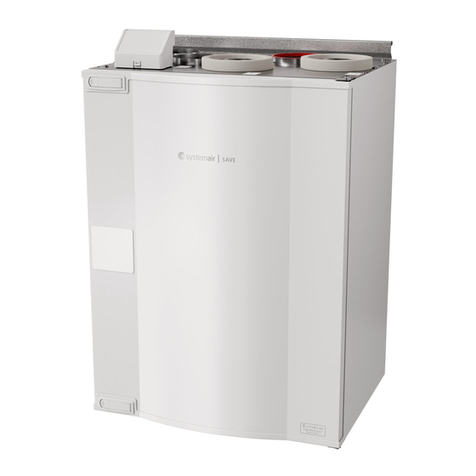
System air
System air SAVE VTR 250/B user manual

Strack
Strack PowerMax SN5650-PMO-0260-V04 operating instructions
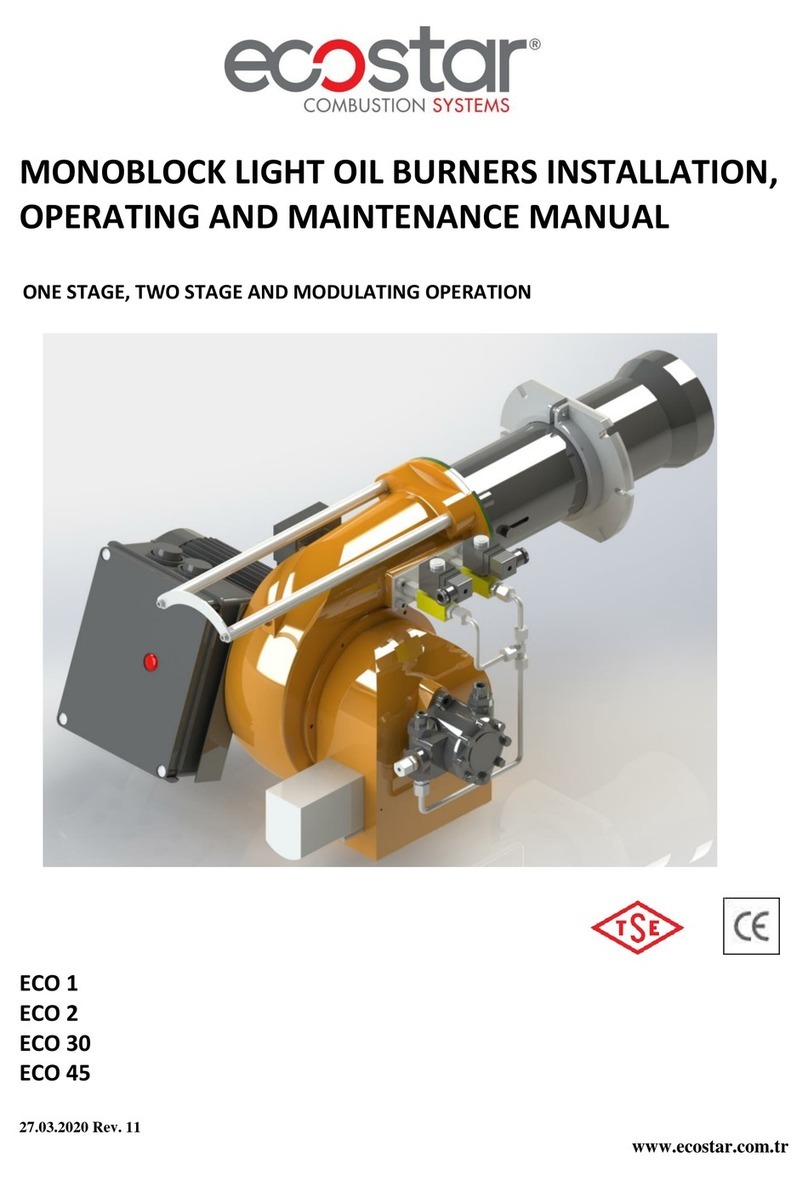
ECOSTAR
ECOSTAR ECO 2 Installation, operating and maintenance manual
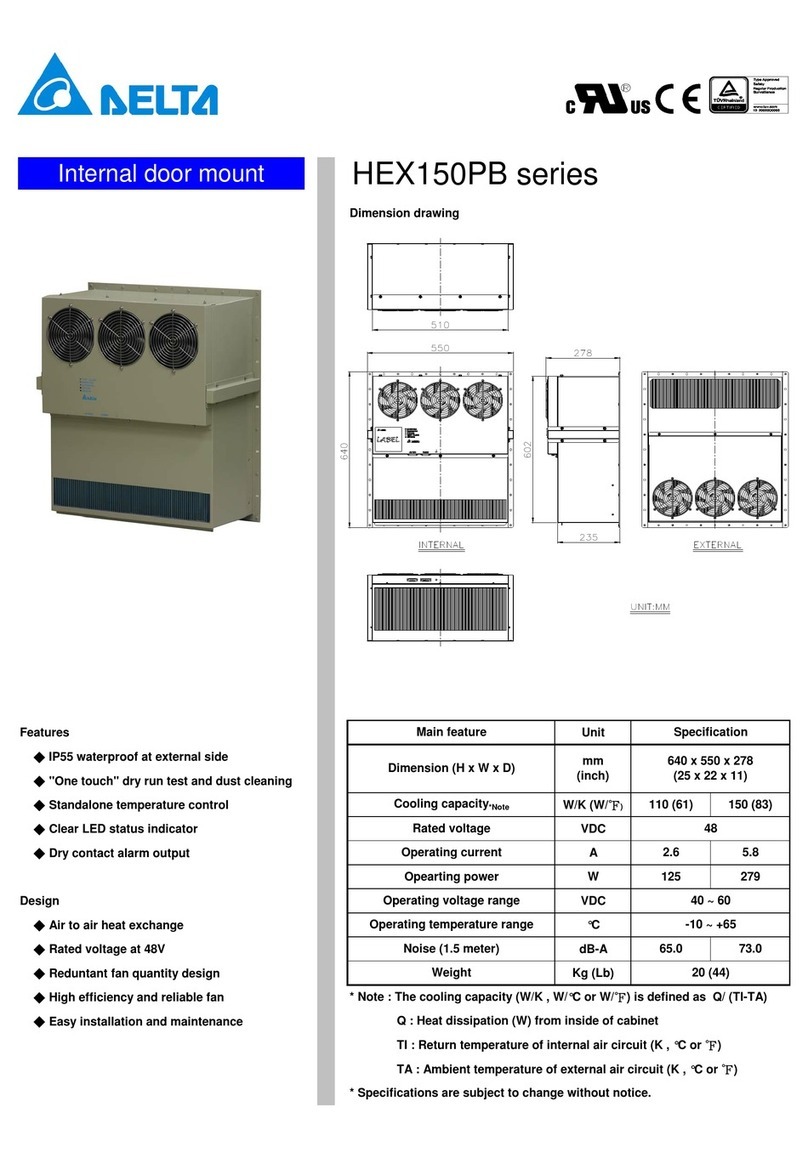
Delta
Delta HEX150PB Series instruction manual
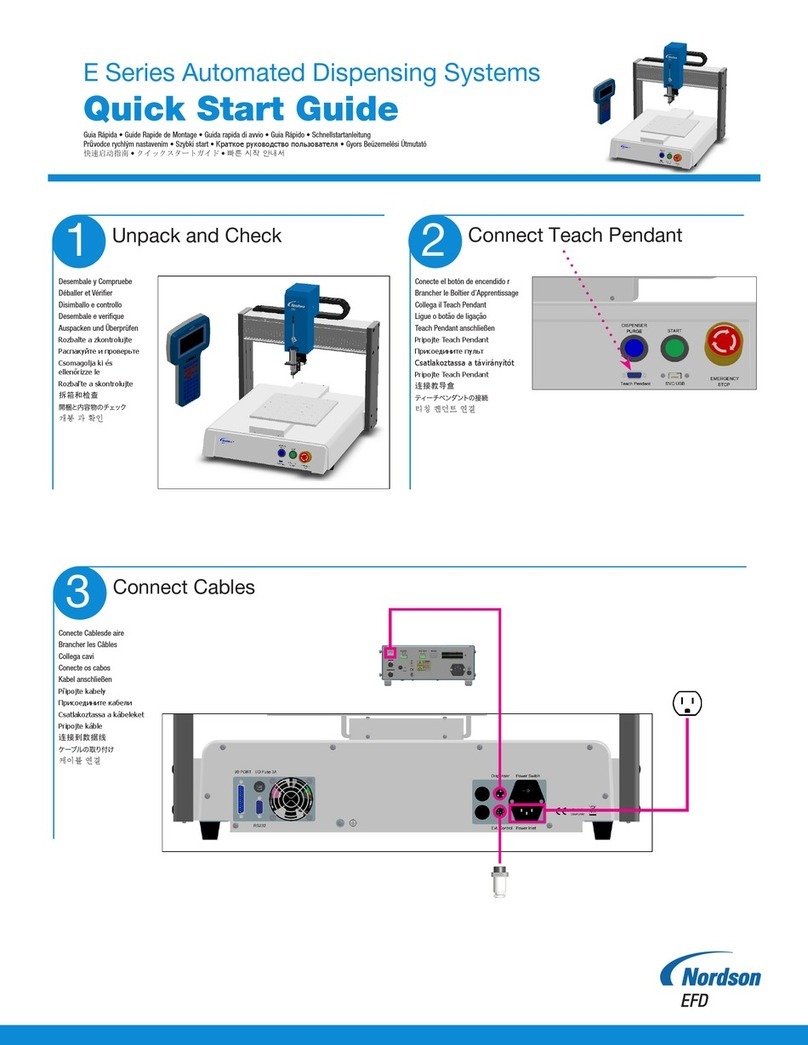
Nordson EFD
Nordson EFD E series quick start guide
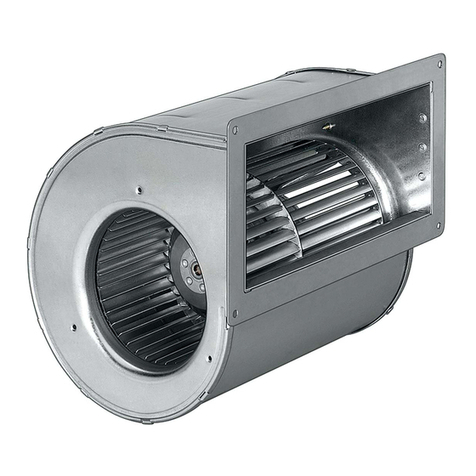
Ebmpapst
Ebmpapst D2E146-AP47-22 operating instructions
